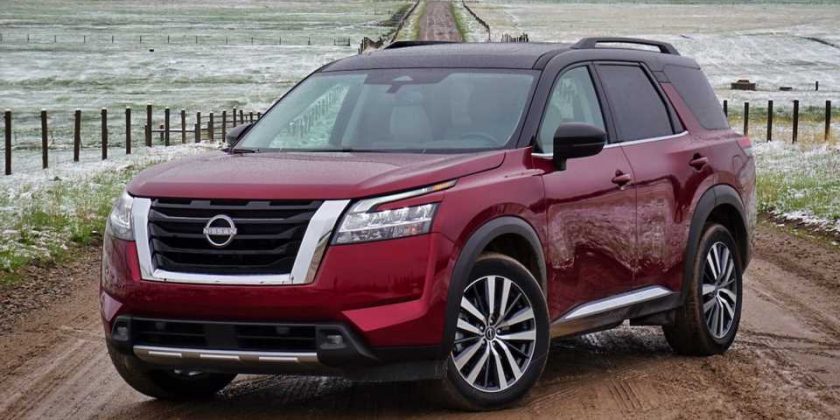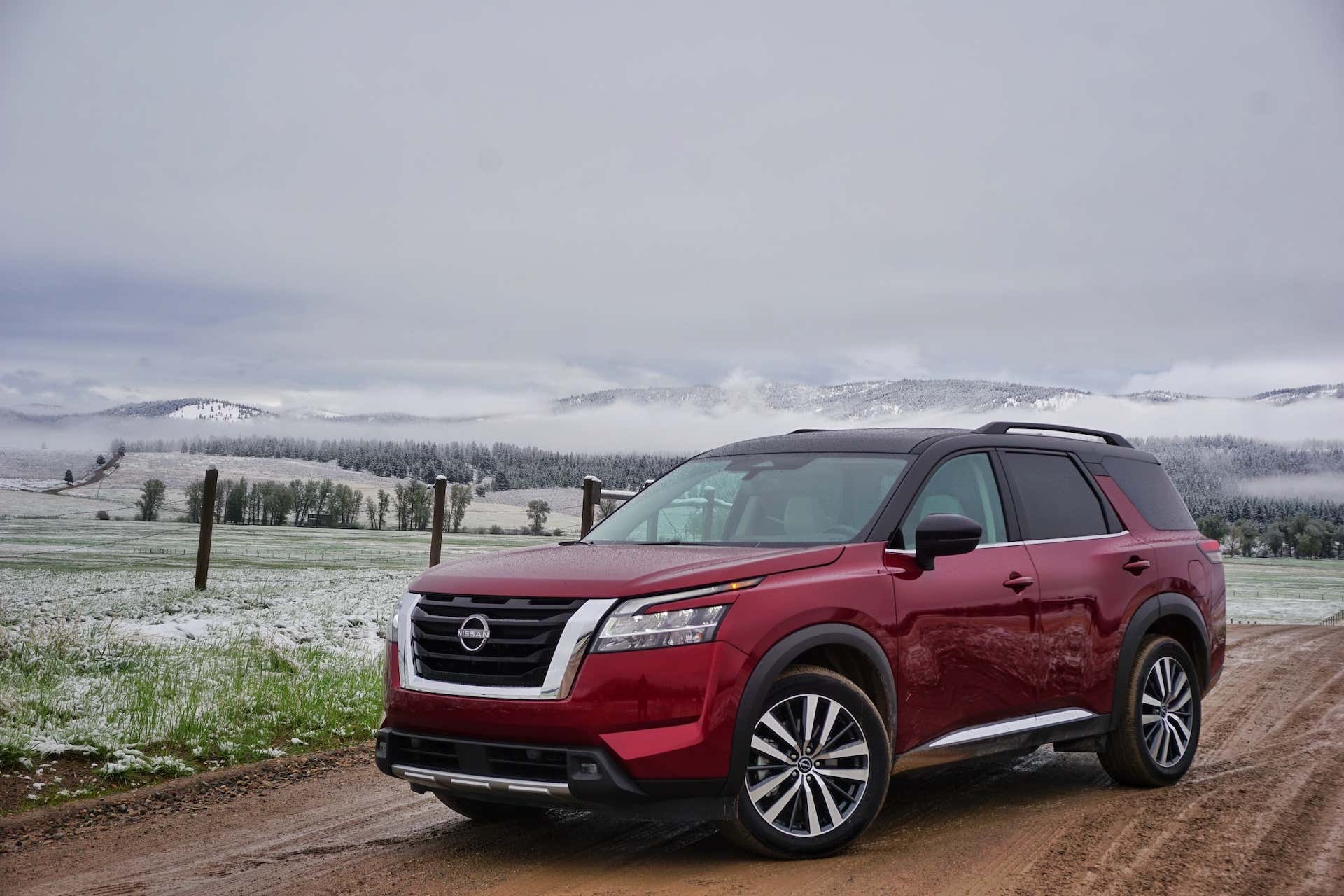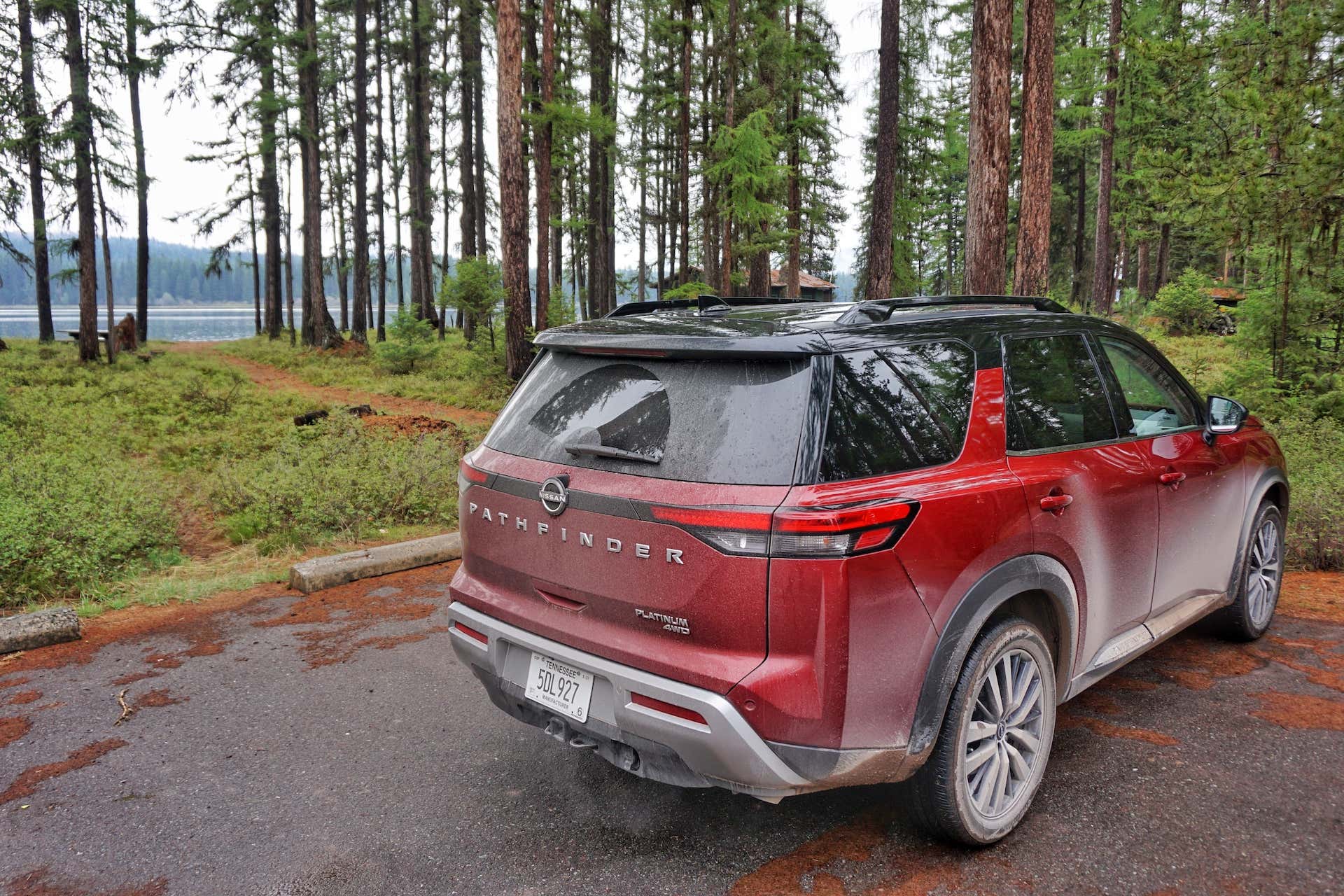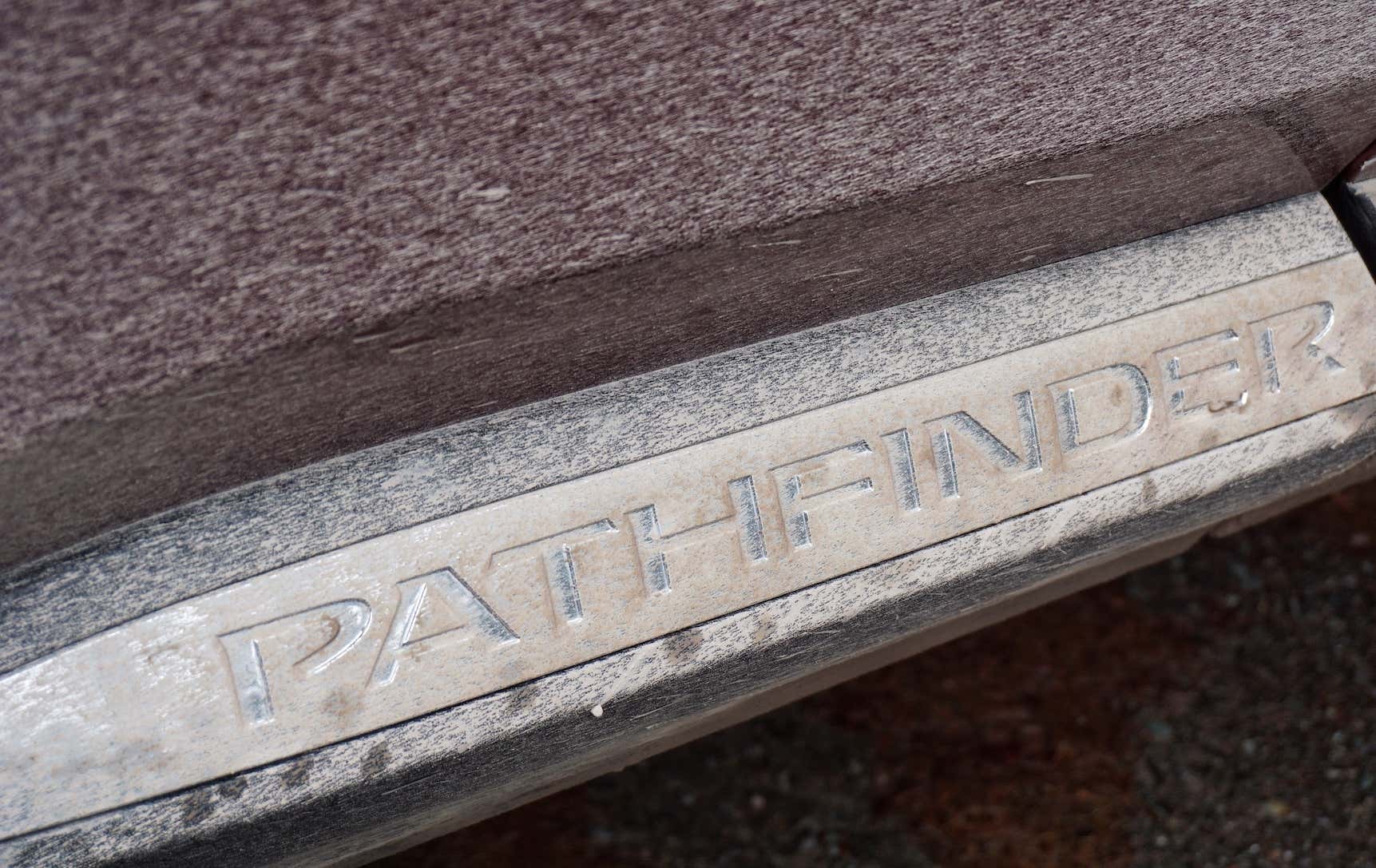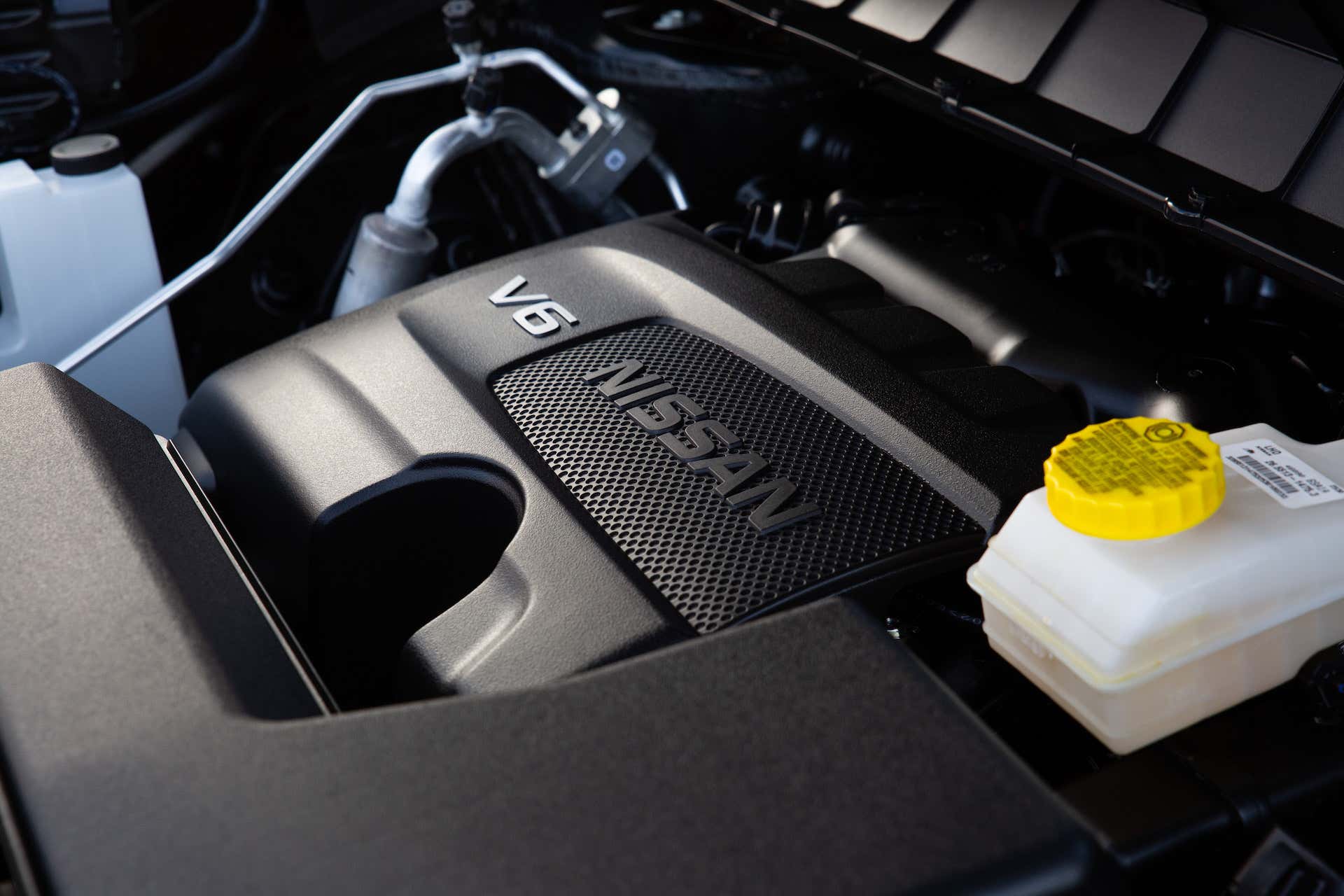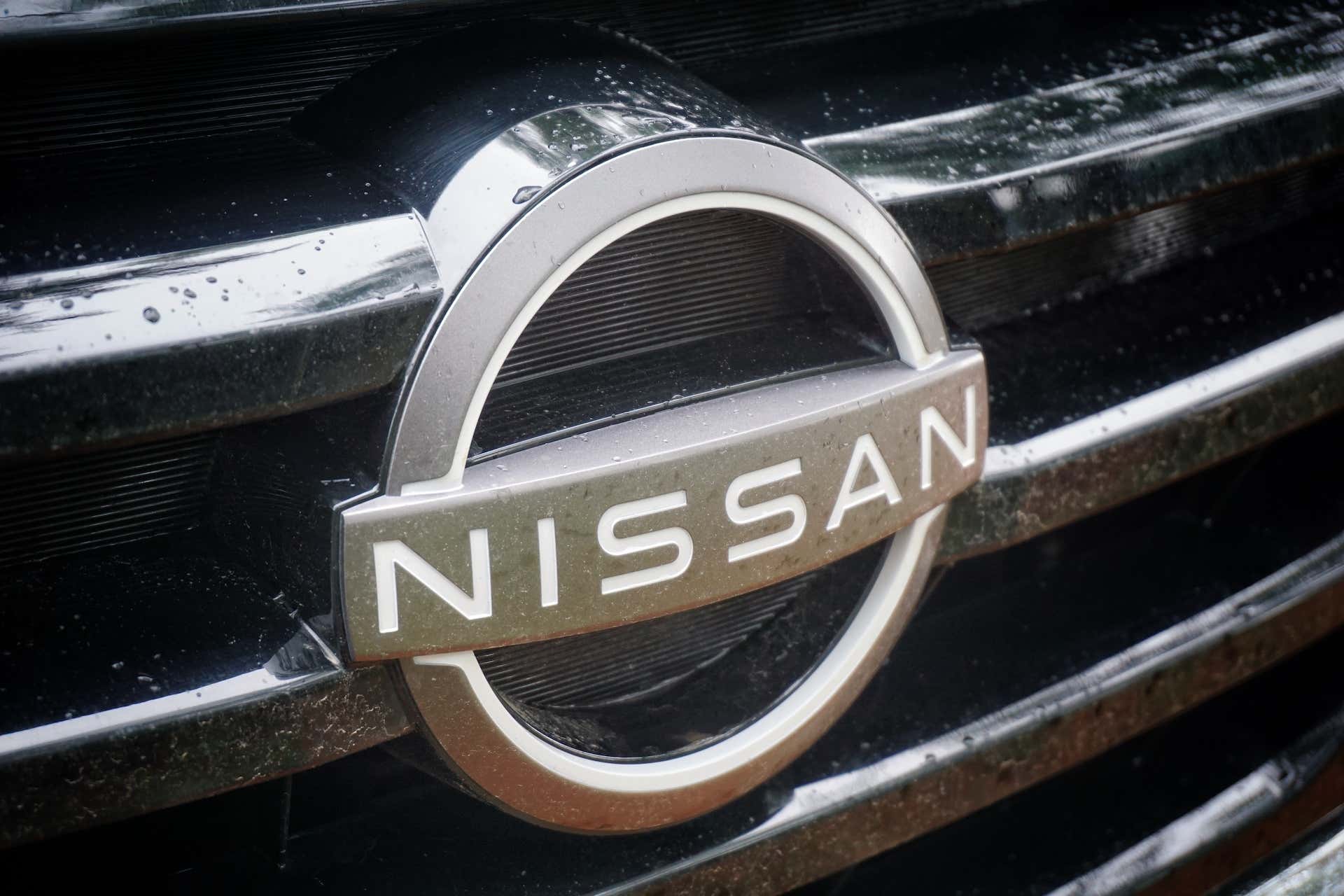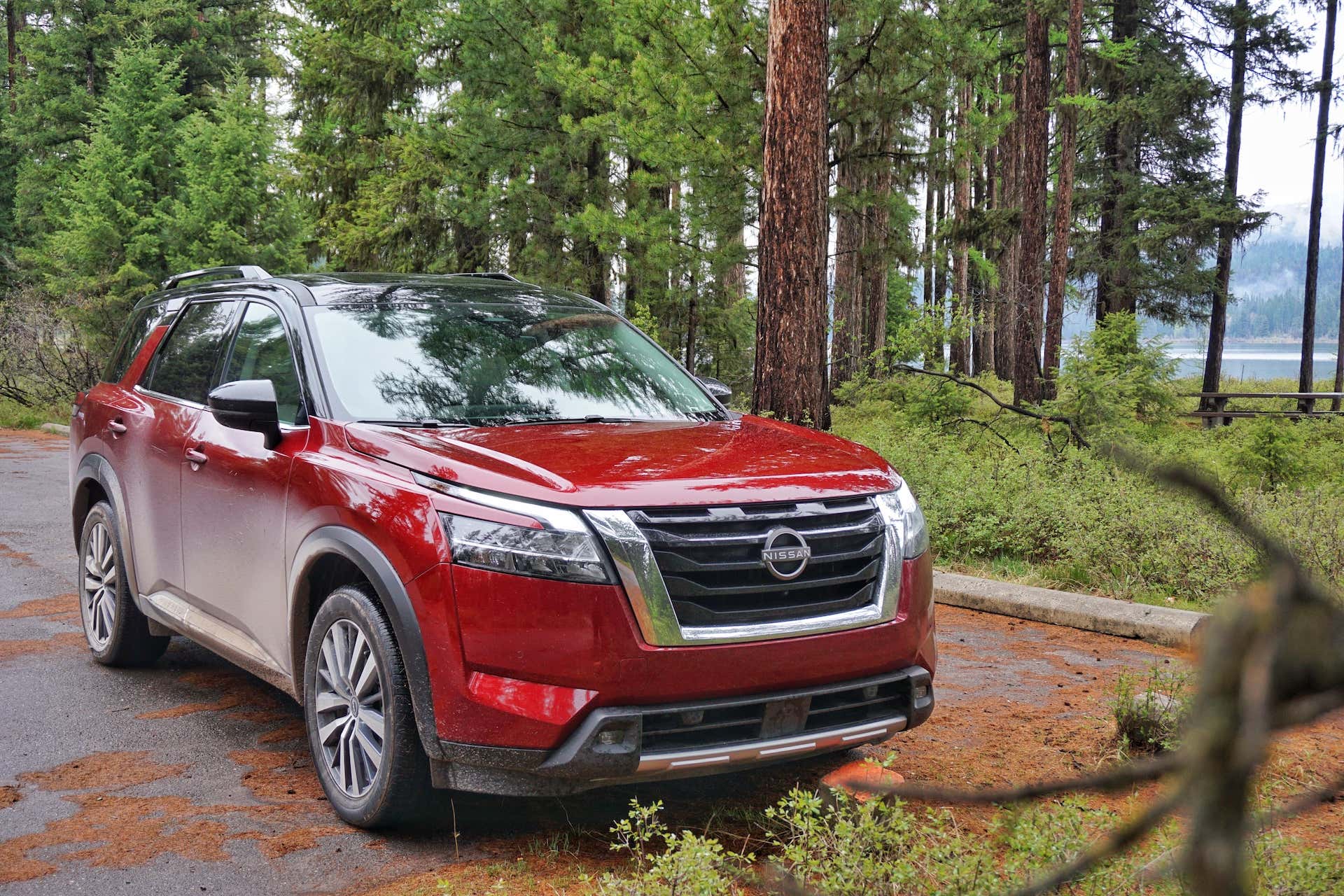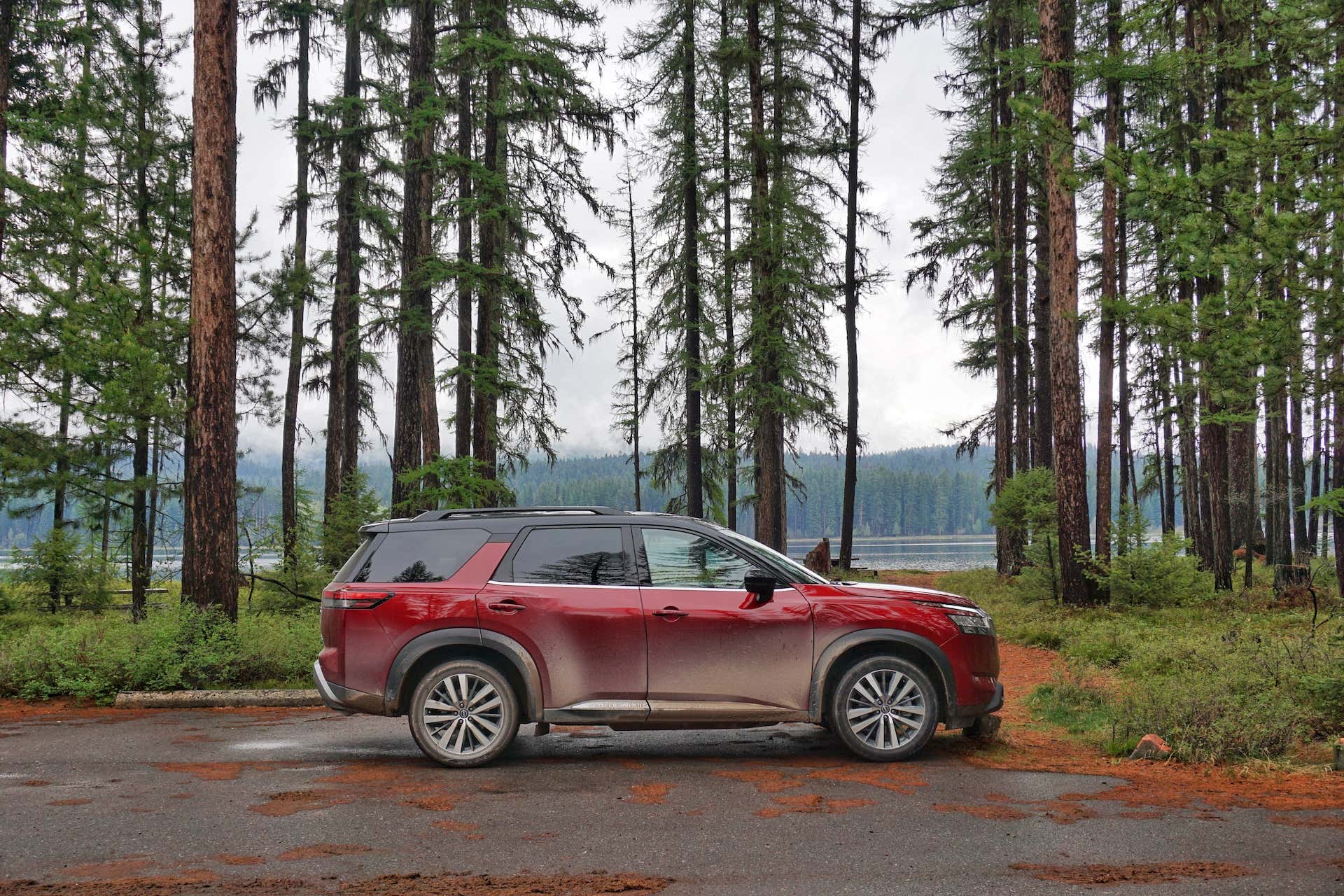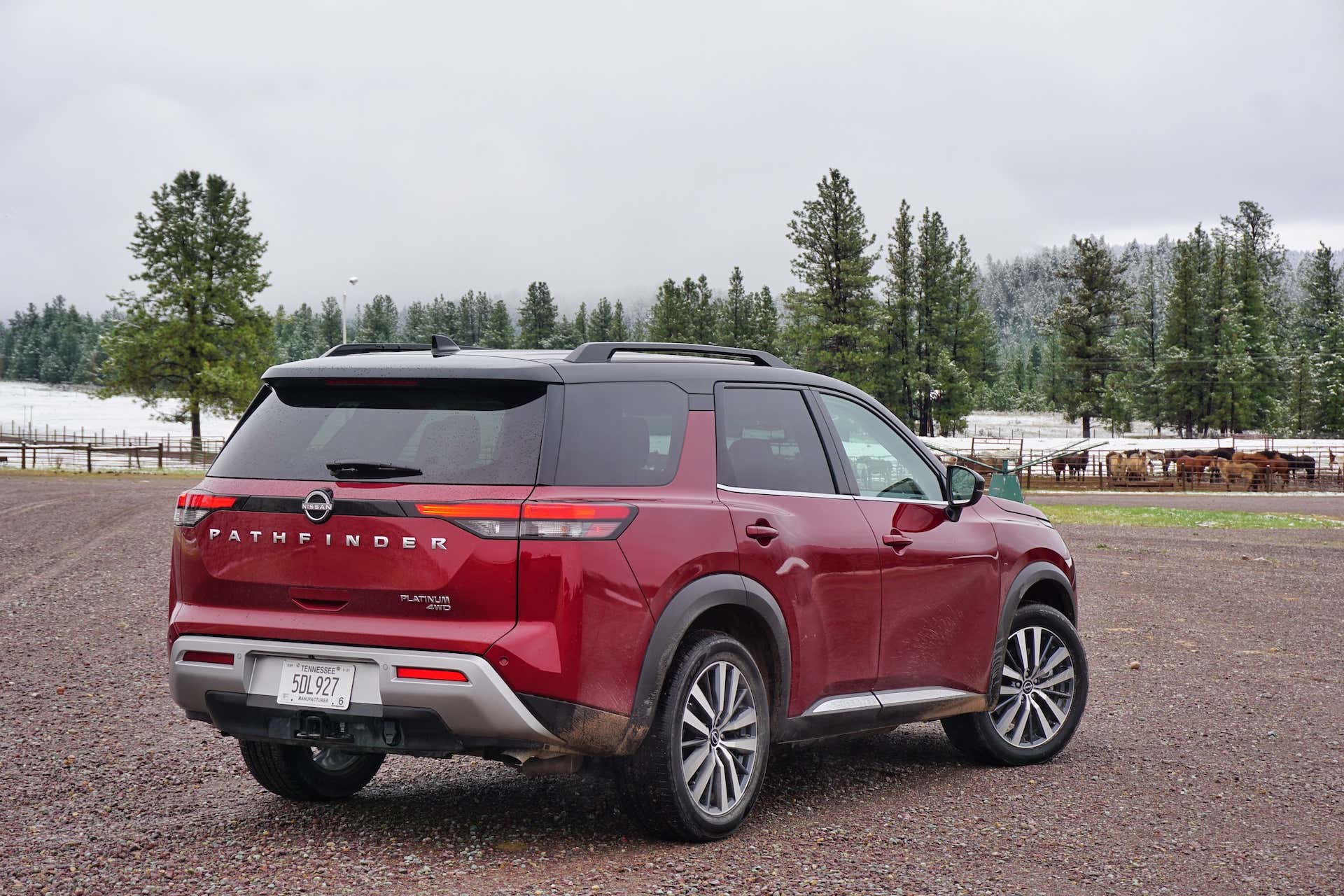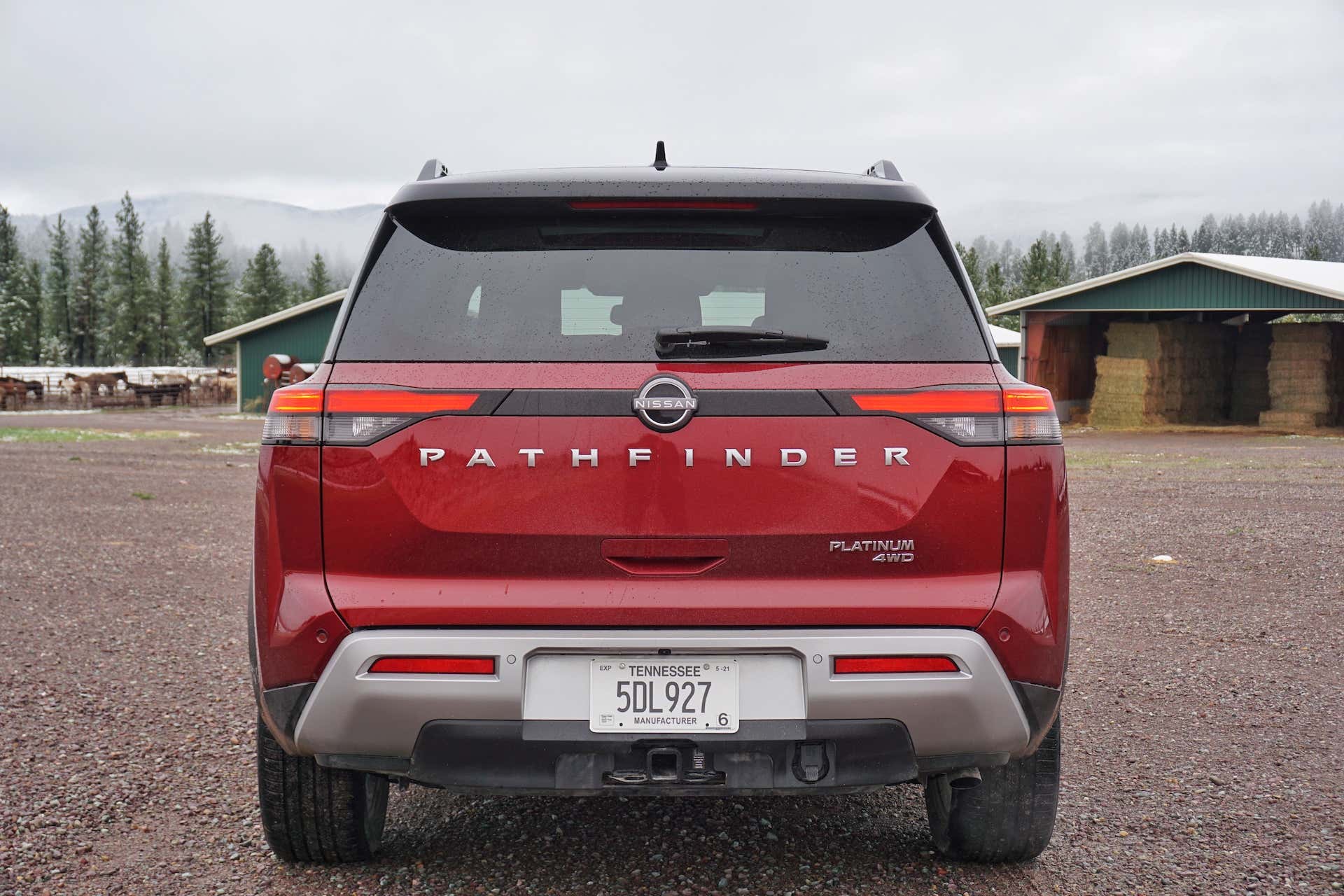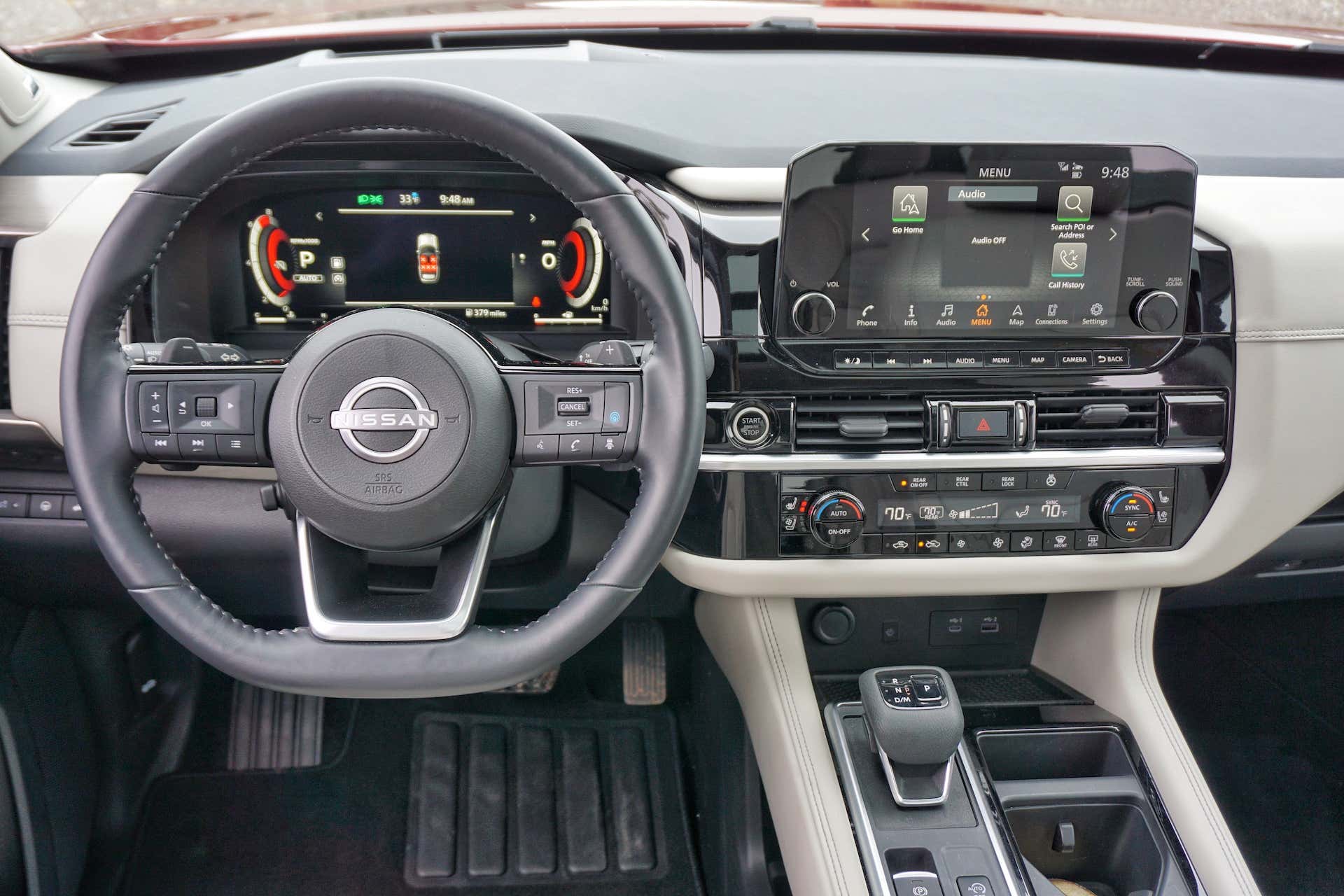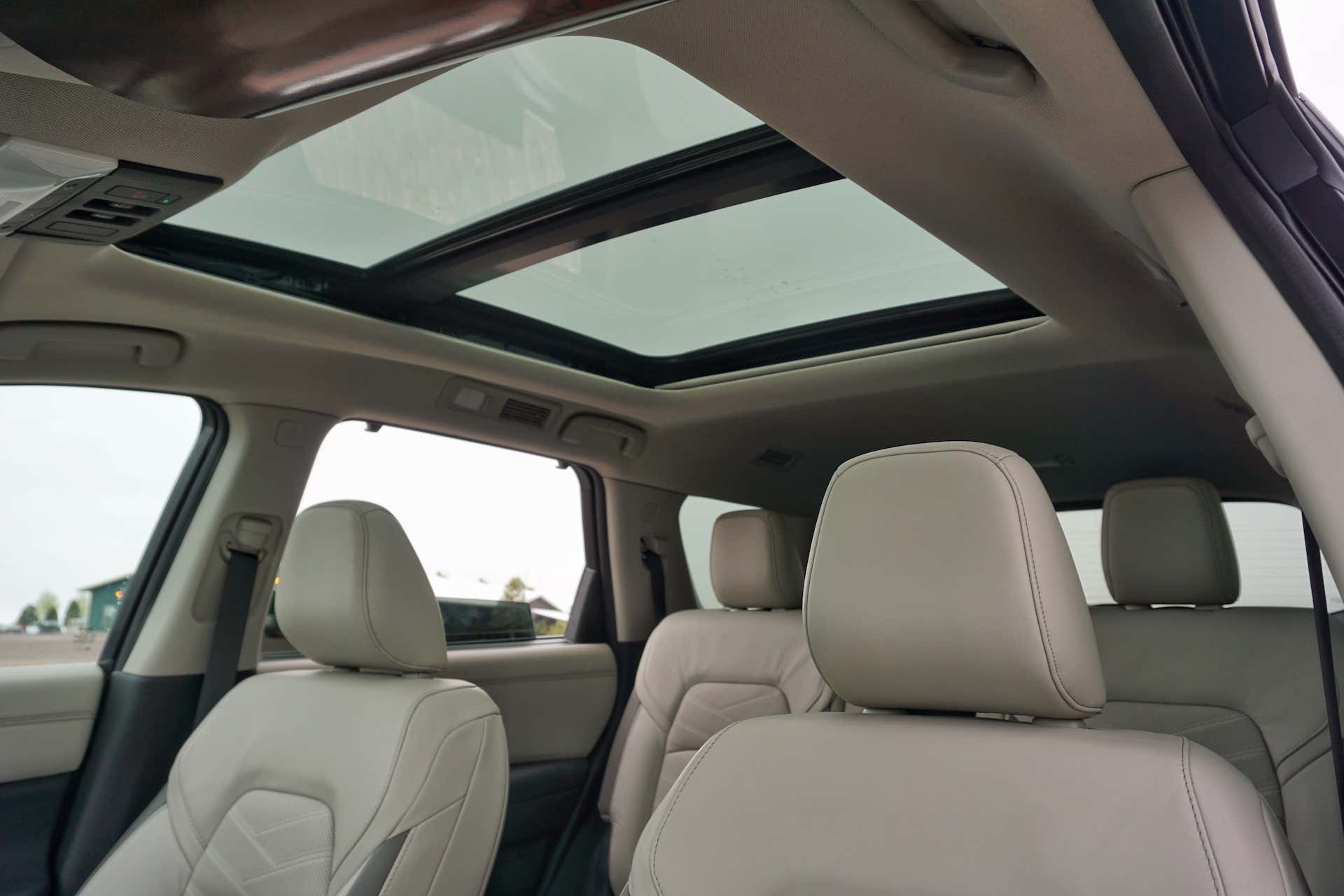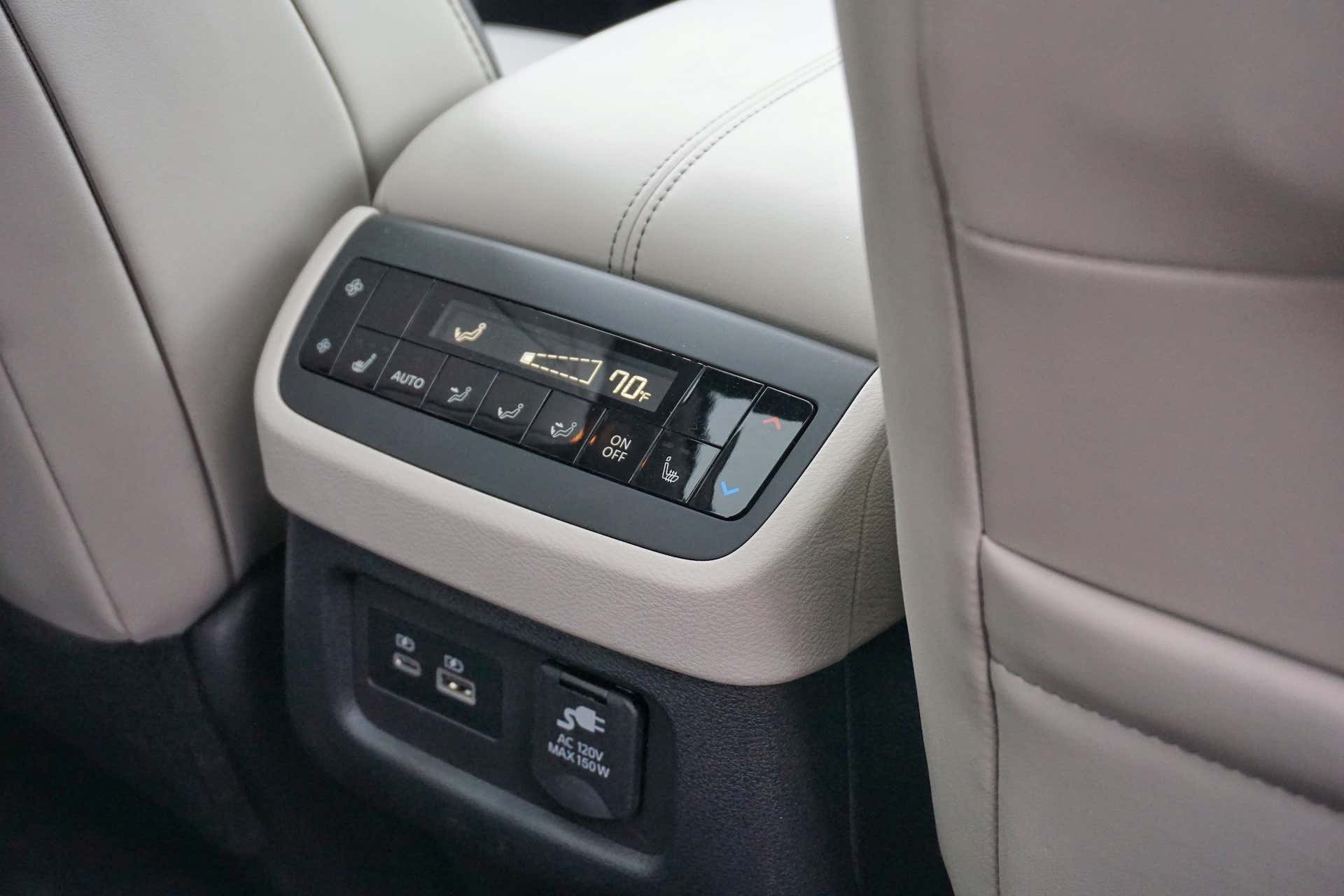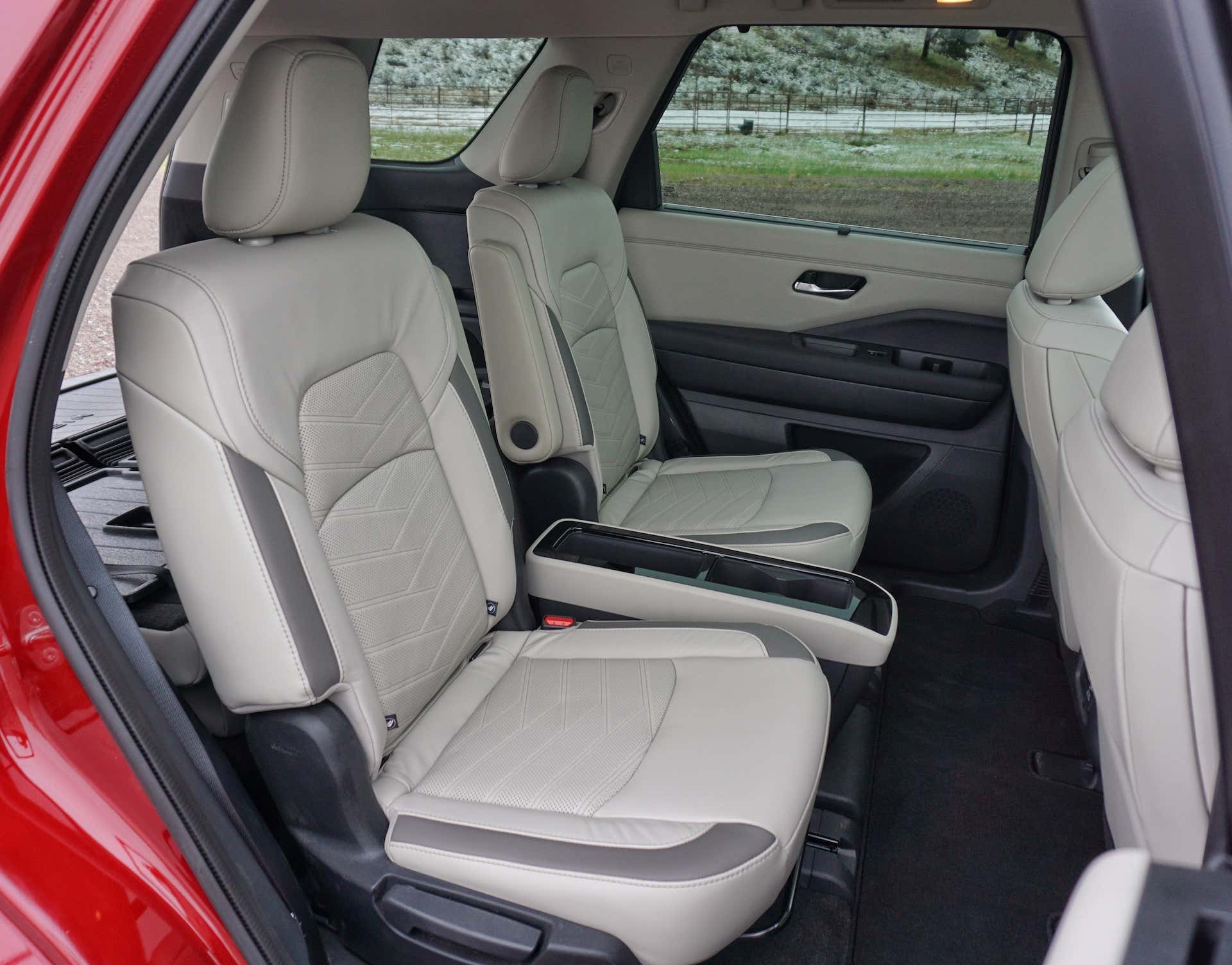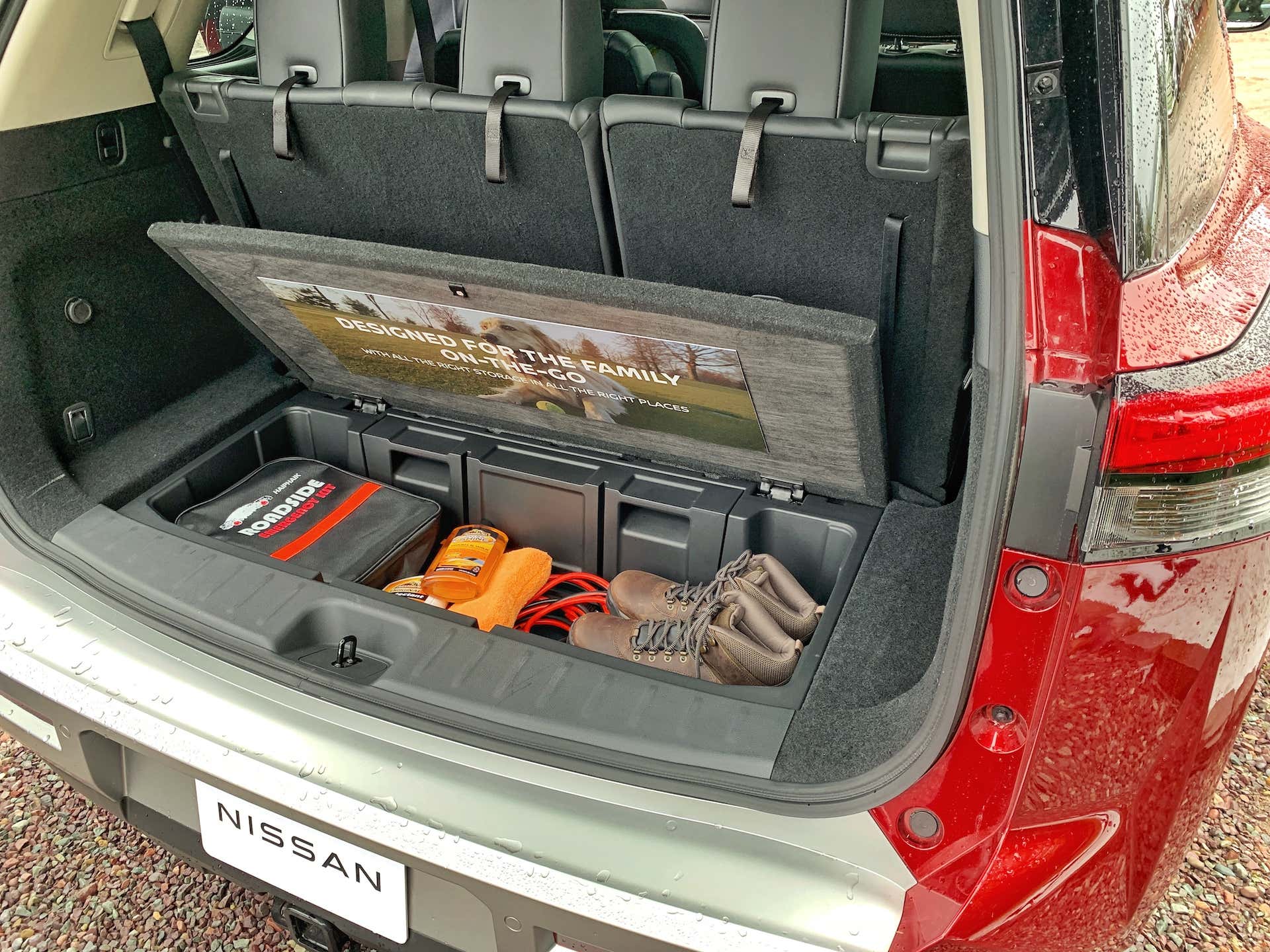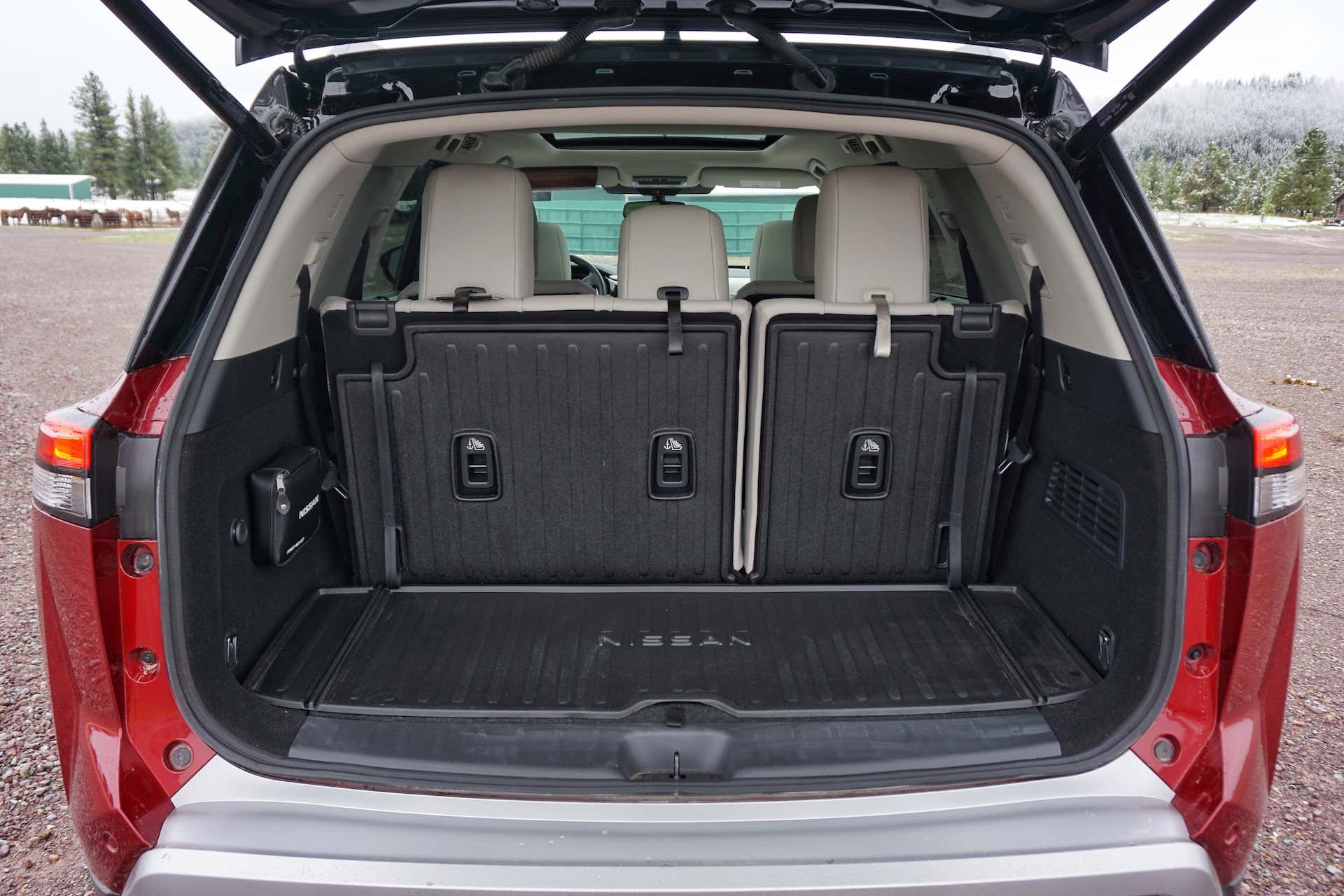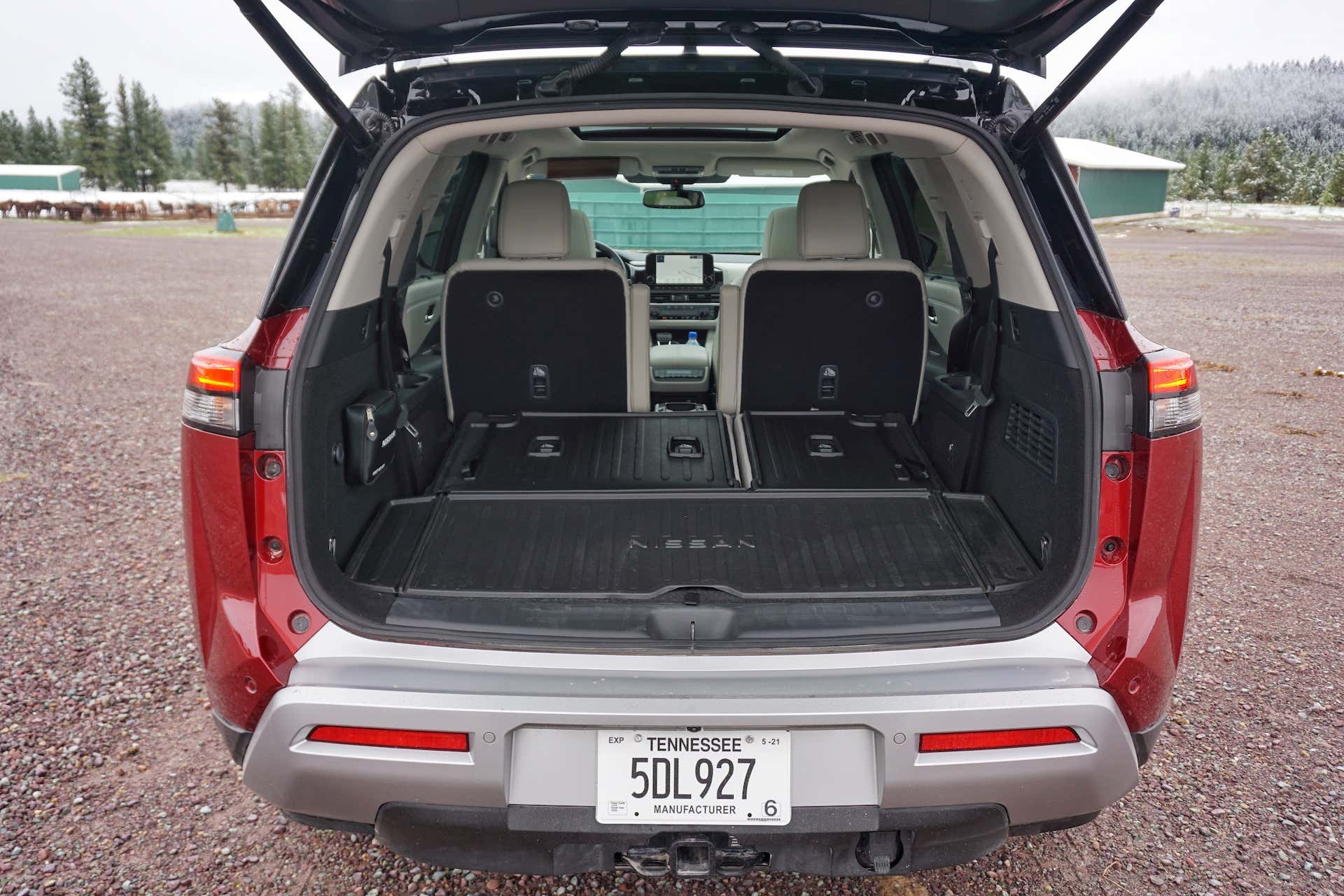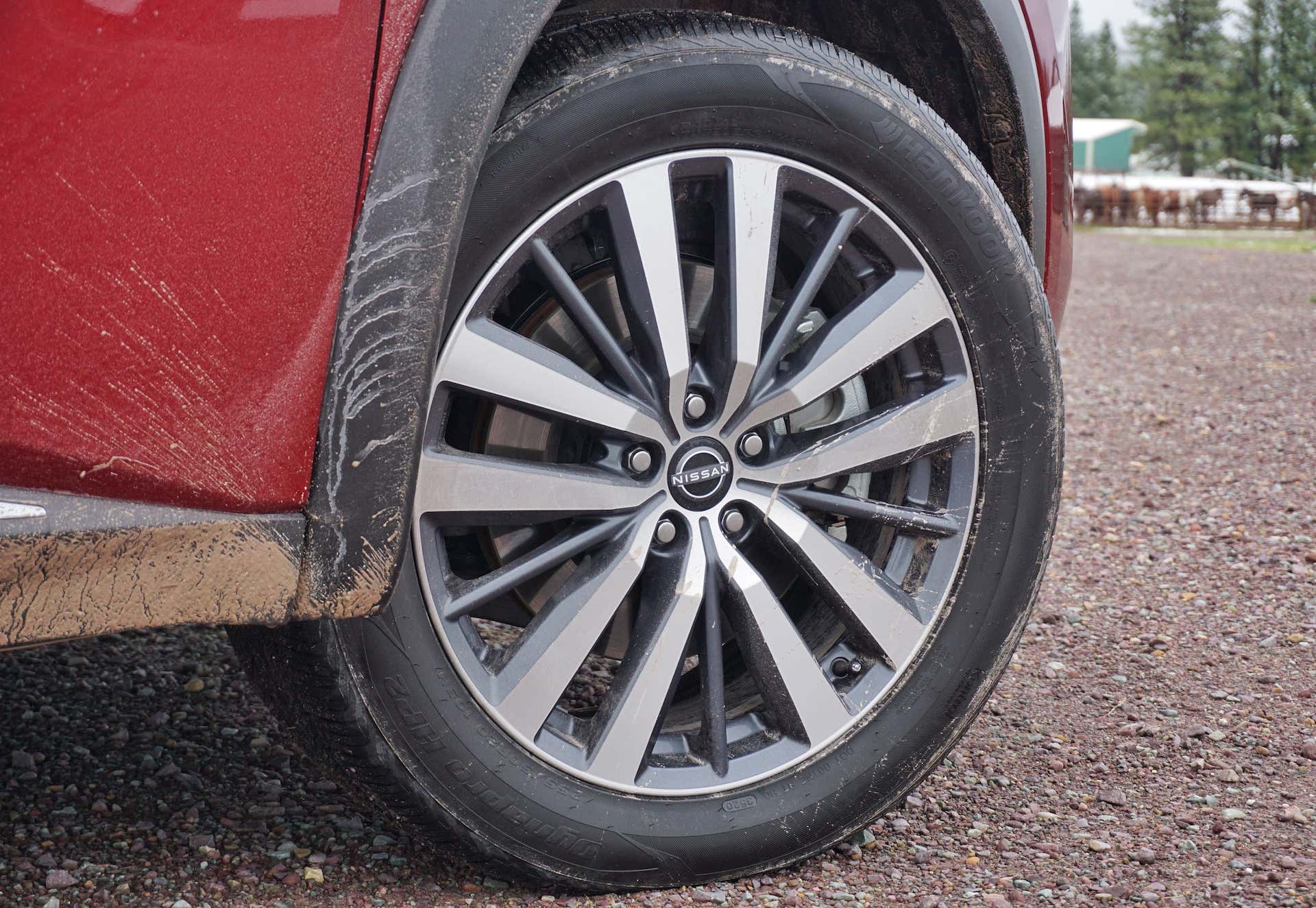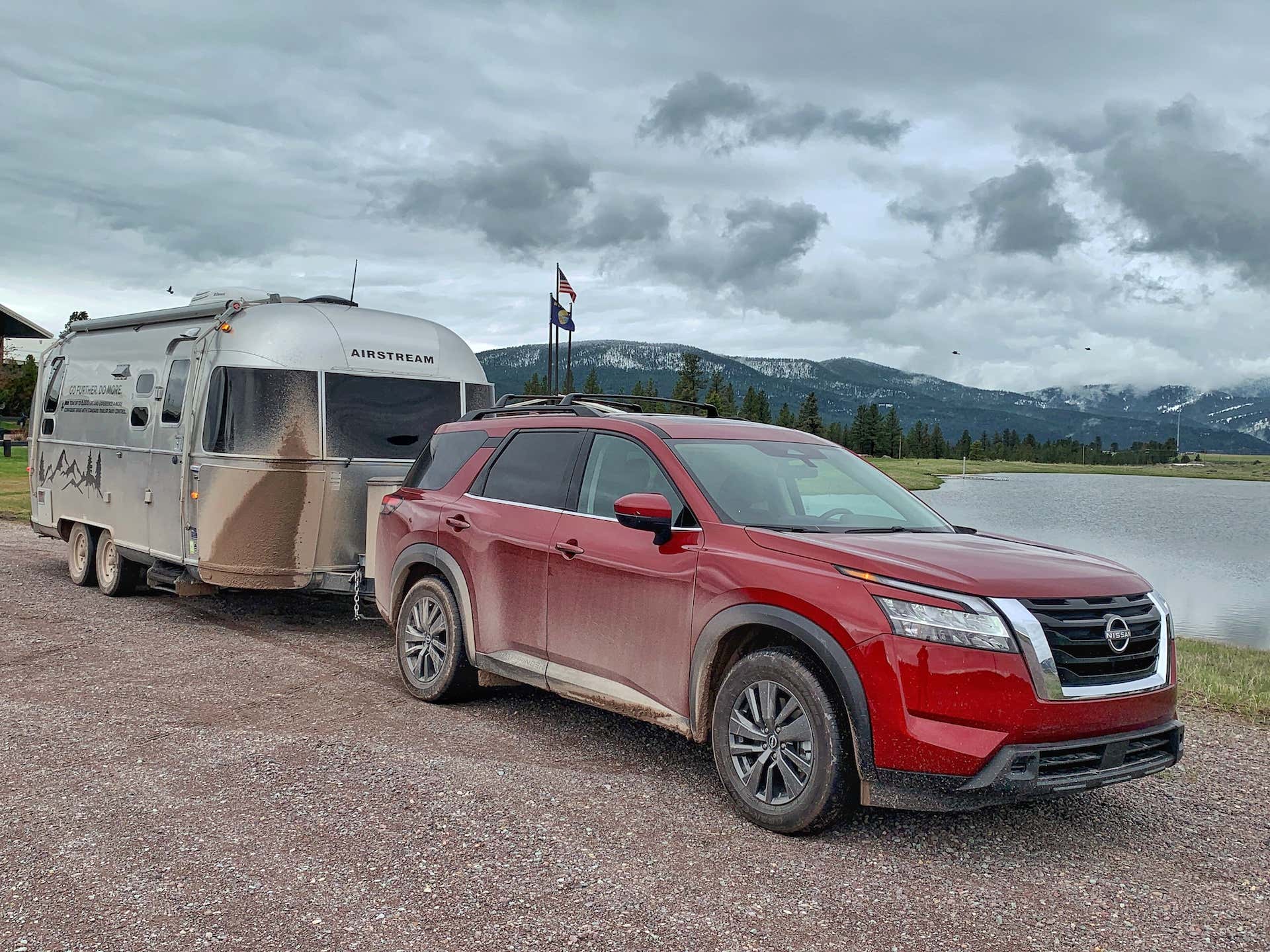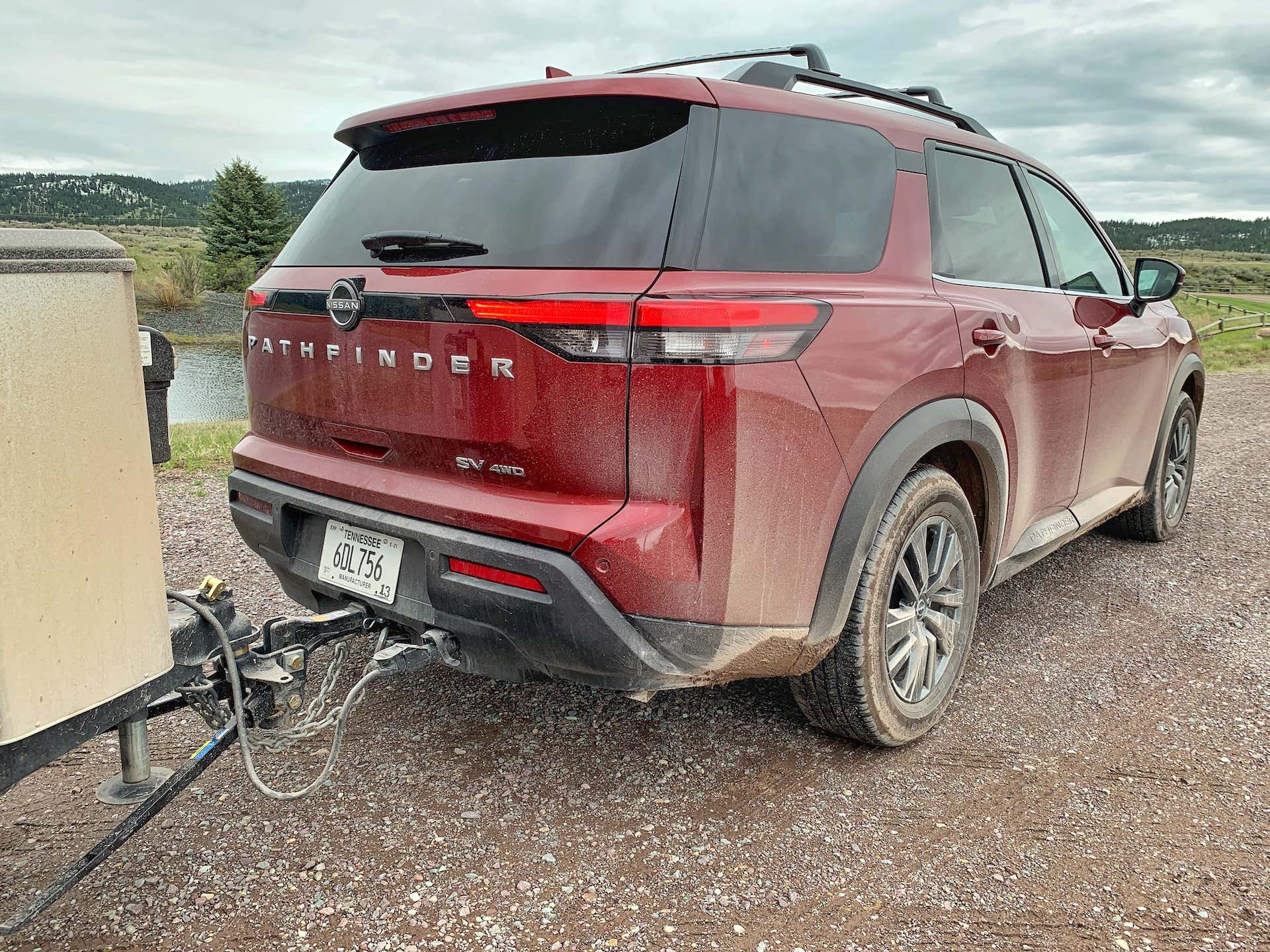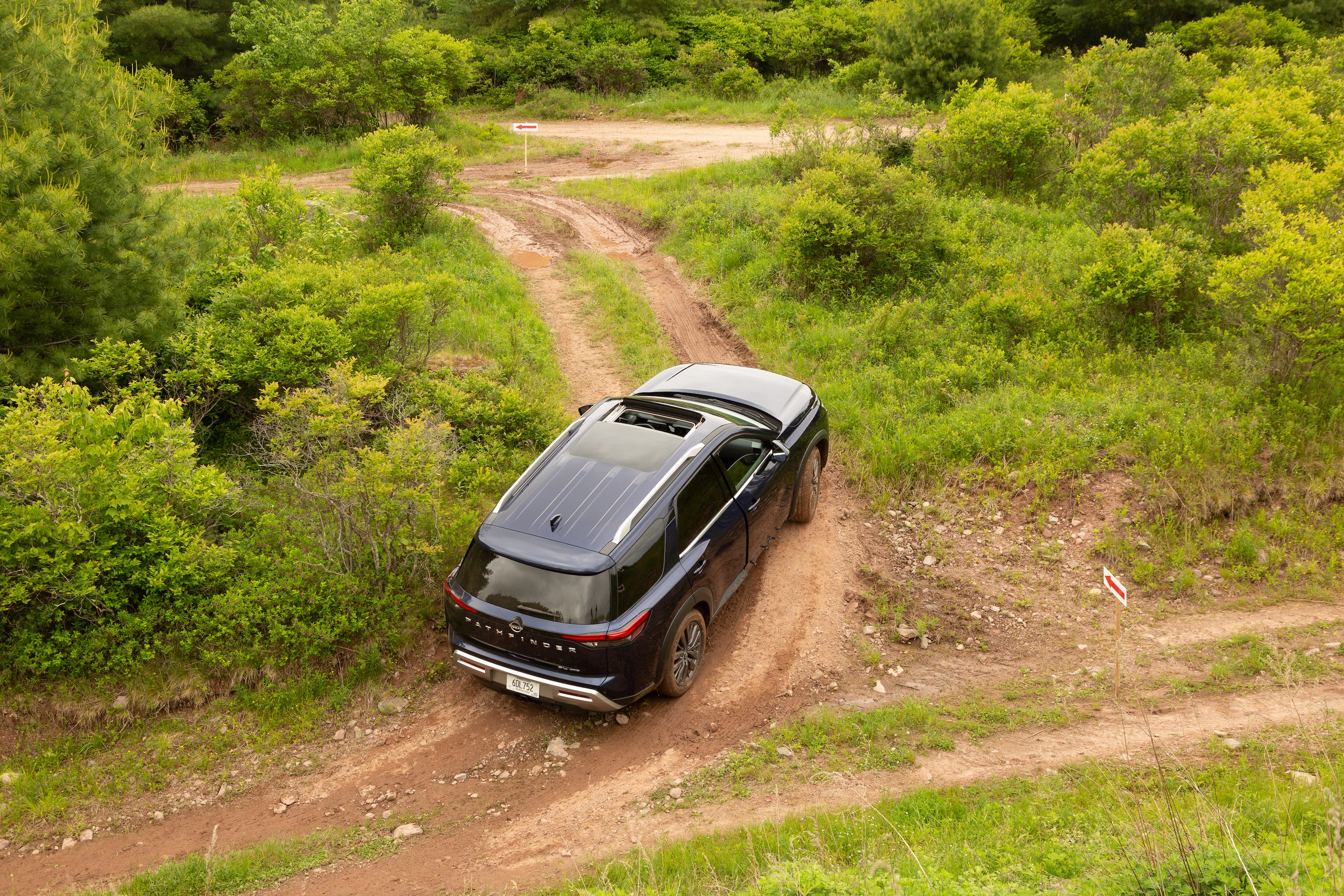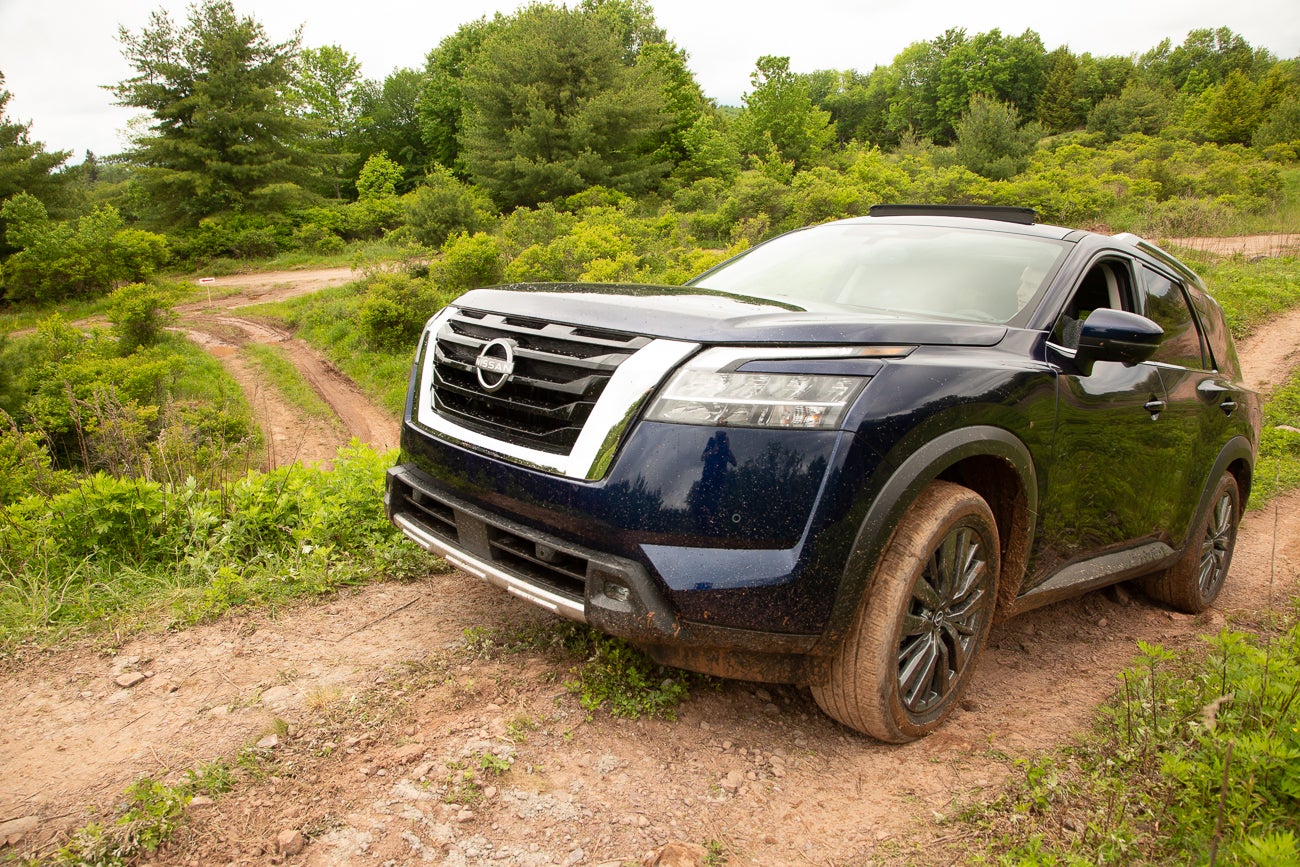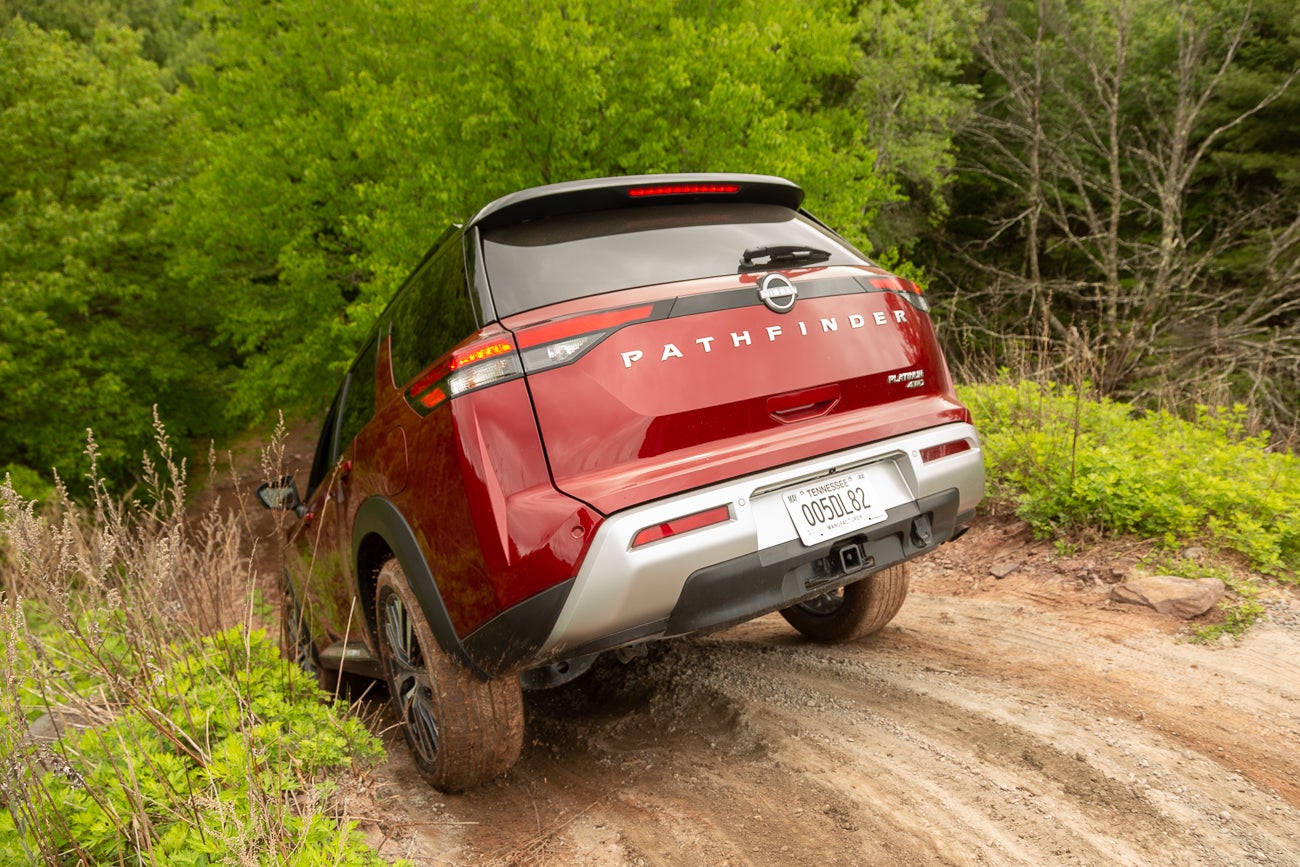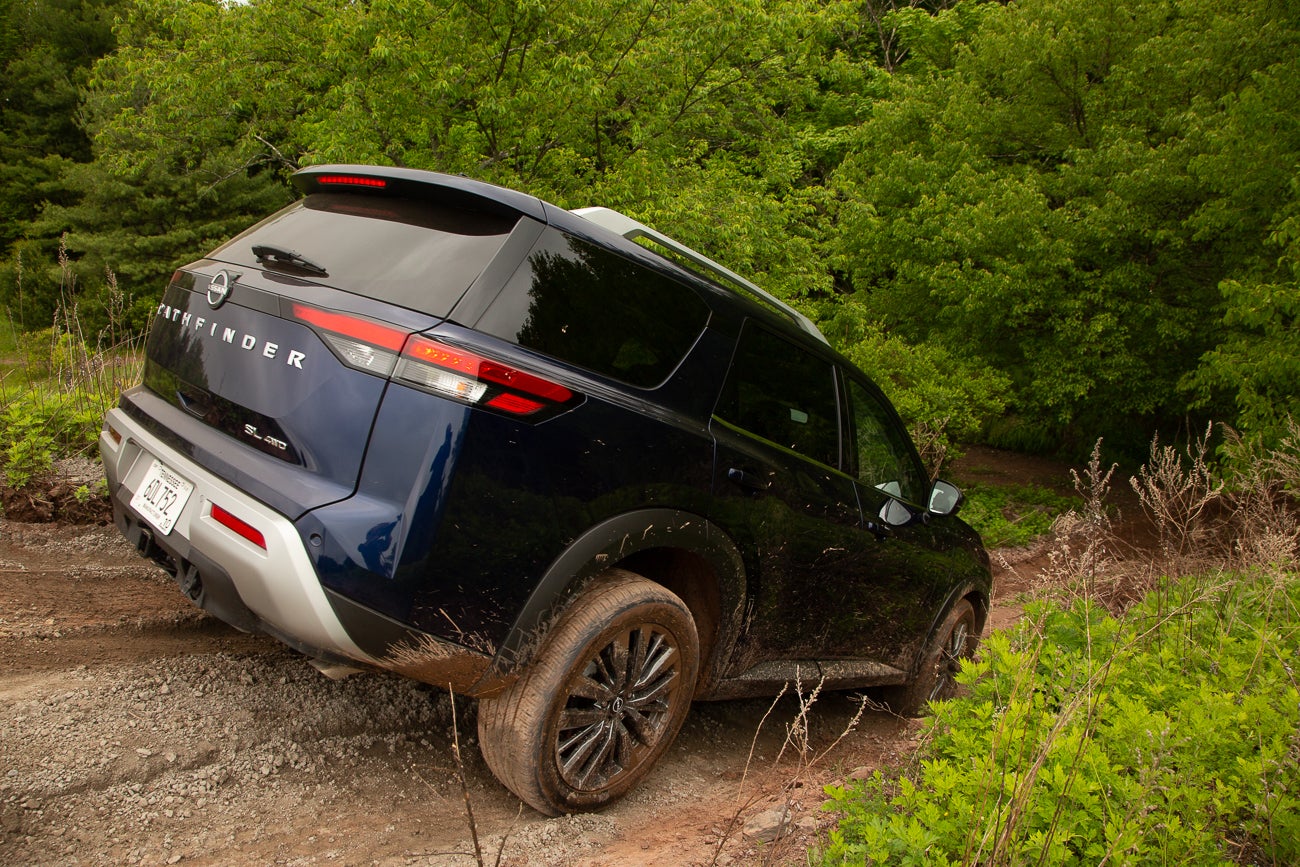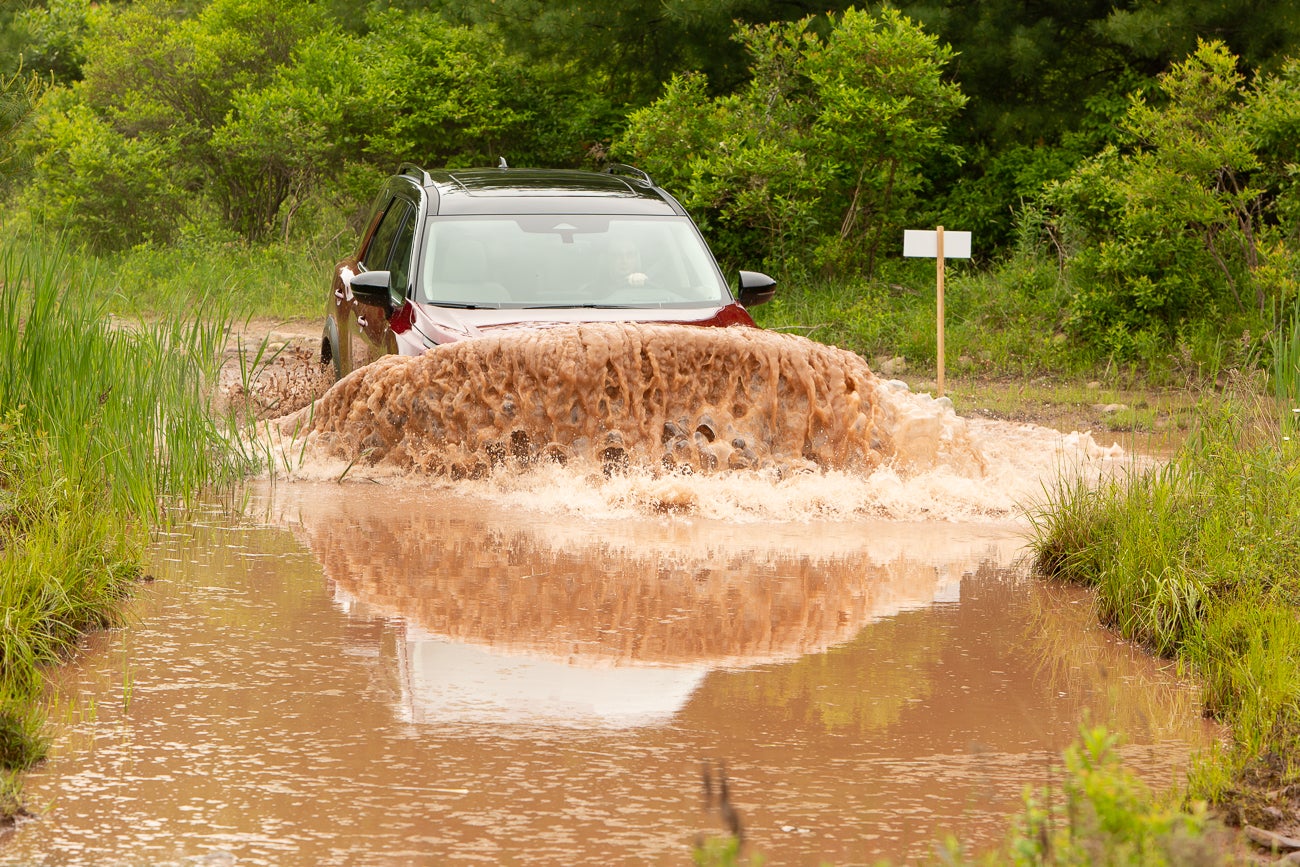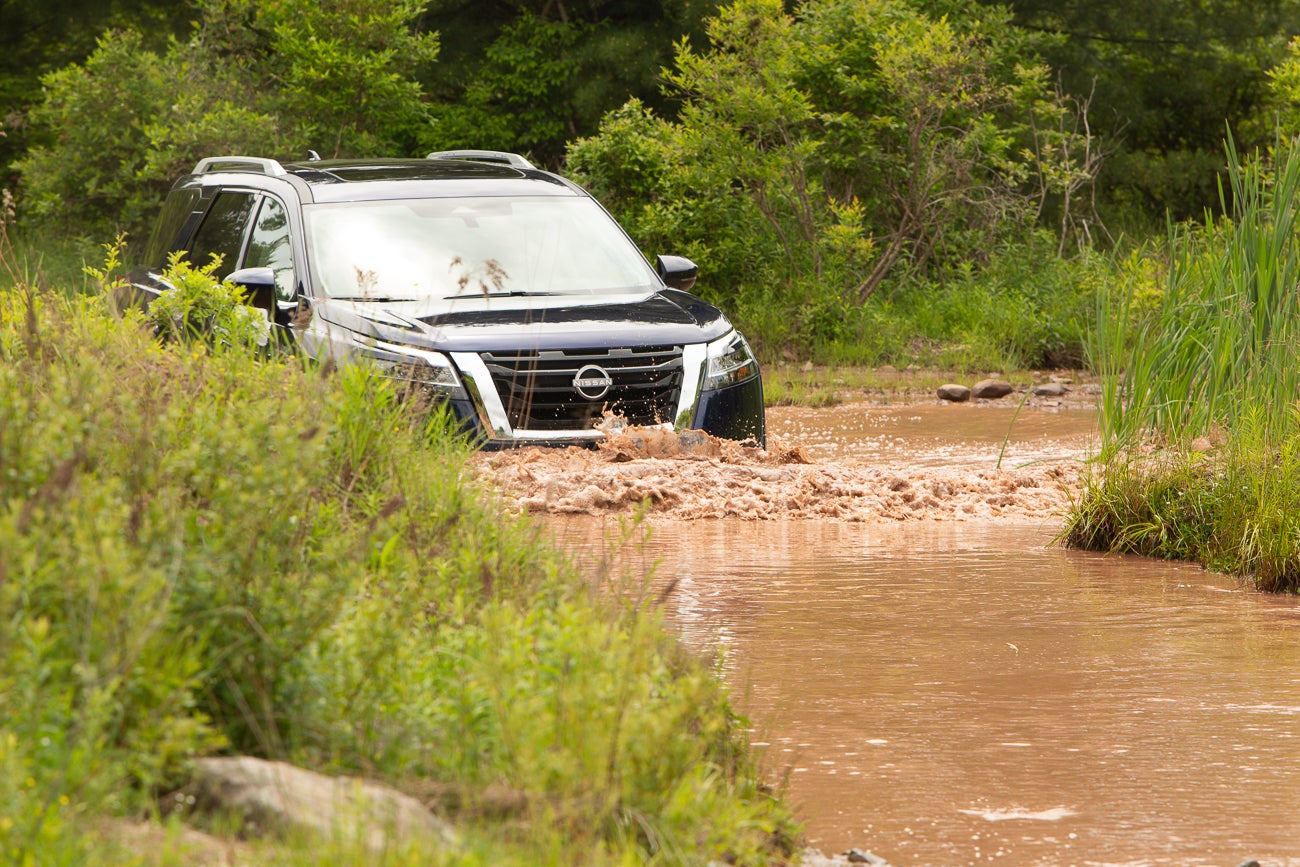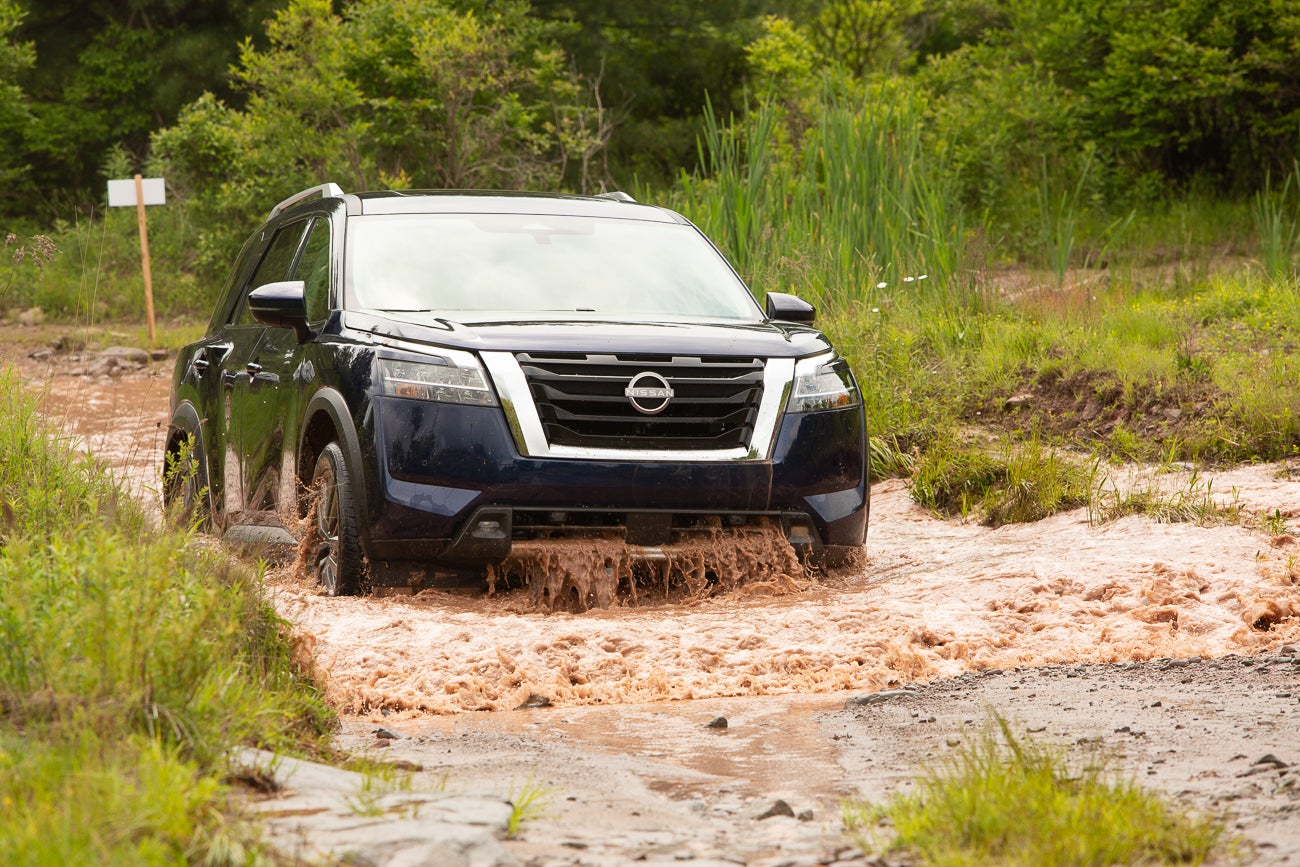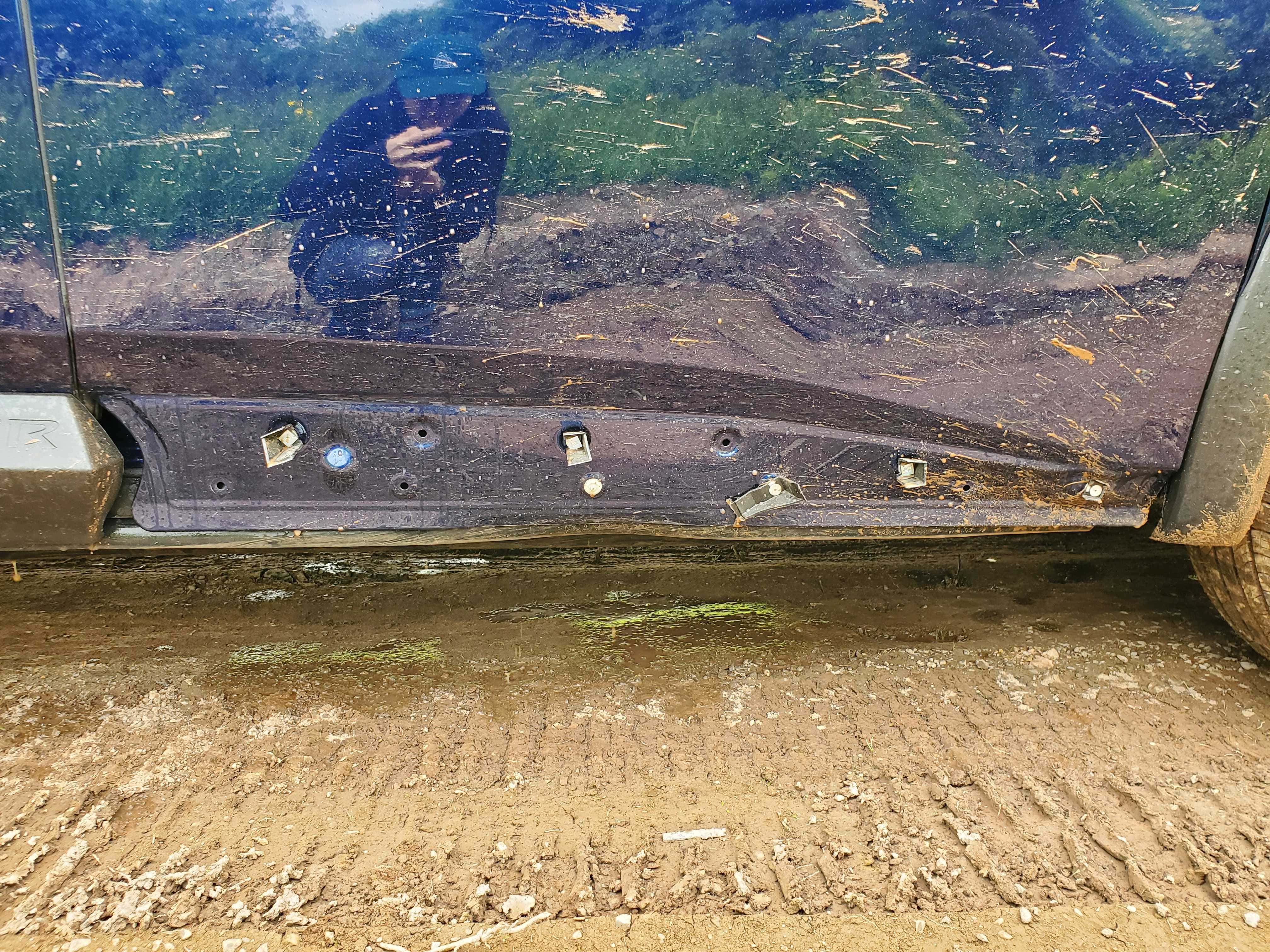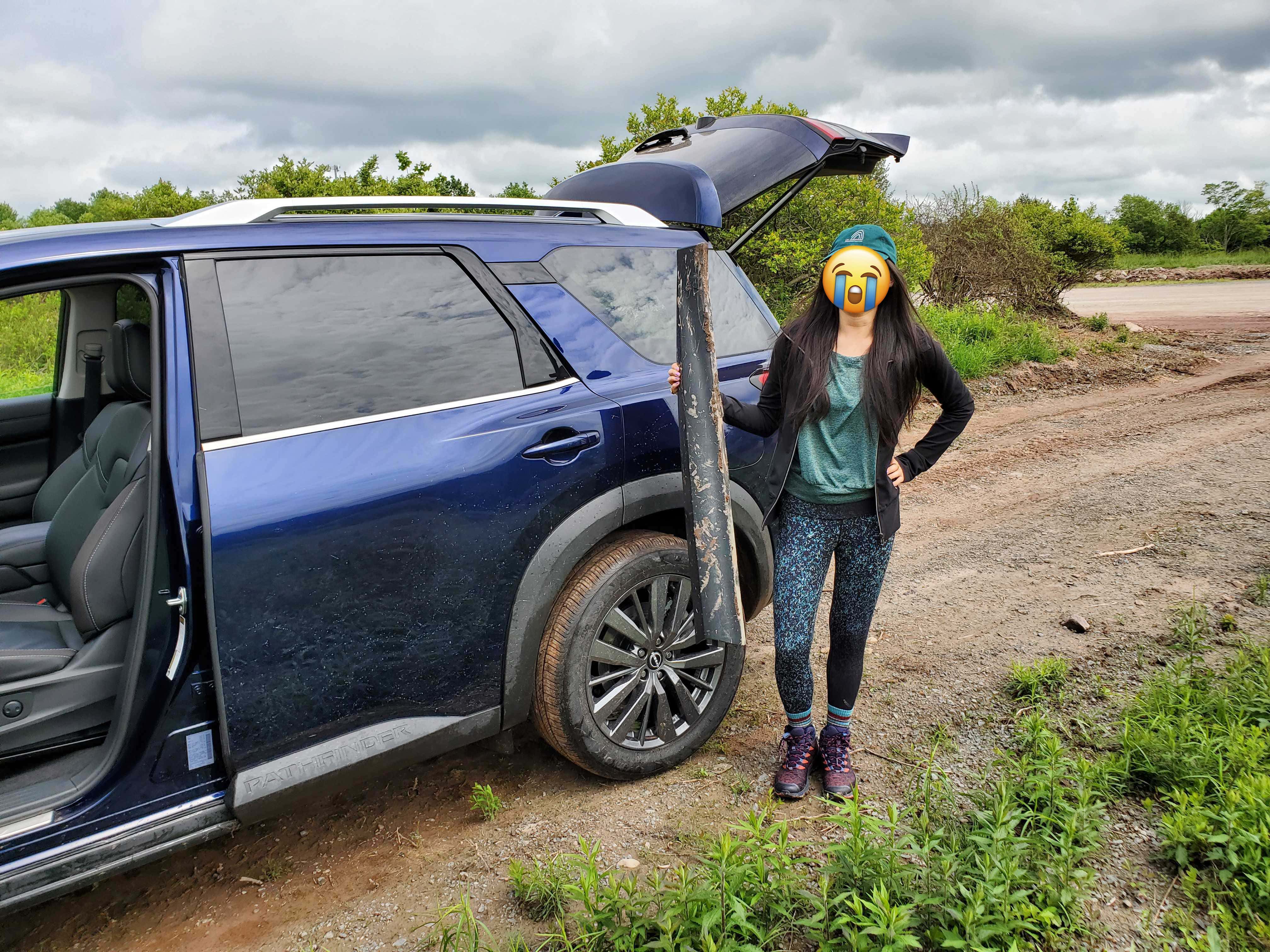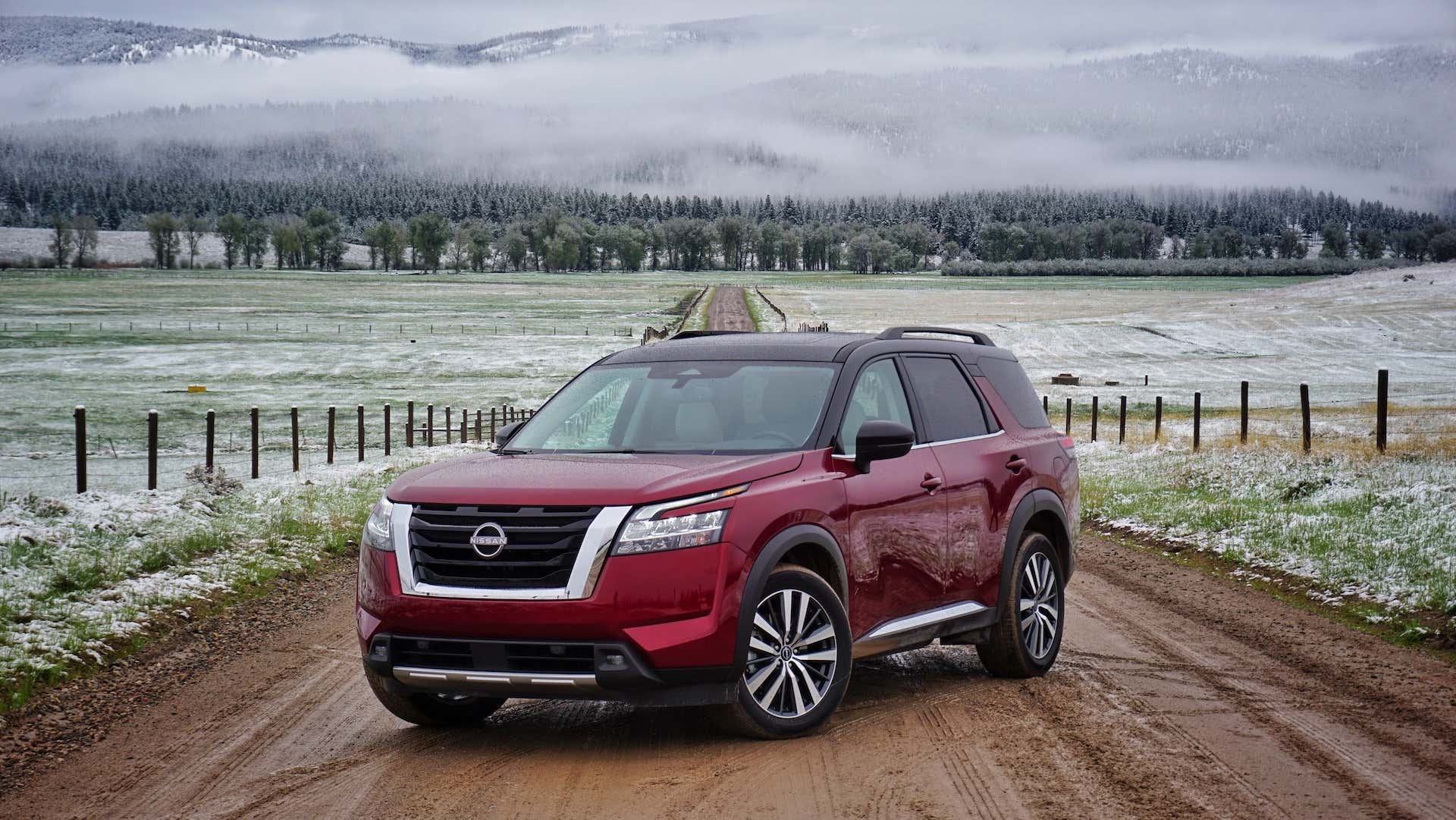Remember when Nissan CEO Makoto Uchida was confronted by dealers about the automaker looking more and more like a “bargain-basement” brand? Pepperidge Farms remembers—and probably so does Uchida. Less than two years since that report made headlines across the globe, Nissan now flaunts half a dozen or so brand new models in its lineup, including the iconic Z, the hard-working Frontier, and the best-selling Rogue. The most recent edition is the all-new 2022 Nissan Pathfinder, which has enjoyed a rich history in the United States and became the poster child for utility shortly after its debut 35 years ago.
Changing a customer’s perception of a brand isn’t easy, but it’s not impossible, either. If Kia and Hyundai can do it (two names that were truly associated with bargain-basement brands upon entering the U.S.), then Nissan should have a much easier time. Its latest offerings, most of which I’ve driven and have given high marks, show there’s a burning desire within Nissan to claw its way back to the top and fight the likes of Toyota and (ironically) Kia in the ruthless arena of car sales. As the brand’s midsize, three-row SUV, the new Pathfinder can certainly make or break those ambitions.
2022 Nissan Pathfinder, By the Numbers
- Base price: $34,560
- Powertrain: 3.5-liter V6 | nine-speed automatic | front-wheel drive or four-wheel drive
- Horsepower: 284 @ 6,400 rpm
- Torque: 259 lb-ft @ 4,800 rpm
- Curb weight: 4,317 pounds to 4,625 pounds (depending on trim)
- Seating capacity: 7 to 8 (depending on configuration)
- Cargo volume: 45 cubic feet with third row down, 16.6 with third row up
- Maximum towing capacity: 6,000 pounds
- EPA fuel economy: 21 mpg city | 26 highway (27 4WD) | 23 combined
- Quick take: It’s a modern Pathfinder for the modern family.
Once the gold standard for rugged capability, the original two-door Nissan Pathfinder offered buyers everything they wanted from a tough-as-nails, Japanese, body-on-frame, truckish SUV mixed with the creature comforts of an economy sedan. Designed to take the kids to soccer practice and off the beaten path on camping expeditions alike, the Pathfinder excelled at doing exactly what its name entails: finding paths.
Admittedly, the U.S. market has changed drastically since the mid-’80s and the subsequent generations of Pathfinder reflect said changes. Since 1986, the Pathfinder’s gained two more doors, grown in size and weight, and of course, been equipped with a lot more technology. Nissan’s only going to be a true Toyota competitor if it actually sells cars; normal, reliable, well-equipped cars to the masses at a good price—not lifted mall-crawlers or wannabe sporty/muscle crossovers.
Ask the Pathfinder faithful and they’ll say it’s gotten a lot softer over time, catering more to suburban families than outdoor adventurers. So if you were hoping for this all-new model to bring back the hardcore, rugged, off-road persona of the old-school Pathfinder, you’re going to be disappointed. This is not that. Heck, even the previous-gen SUV wasn’t that, so there’s no real reason to cry now like this is something new.
Now that you know what the new Pathfinder isn’t, I’ll tell you what it is: a fresh, clean start for Nissan.
Drivetrain
At the heart of the Pathfinder is a tried-and-true 3.5-liter V6 engine, which produces 284 horsepower and 259 pound-feet of torque. No news there, as it’s the same package as before. Unlike in the old model, however, the transmission is a new nine-speed automatic that replaces the old Xtronic CVT, making the Pathfinder feel smoother and light-years more responsive than its predecessor.
Offered in two- and four-wheel-drive models, the former sends power to the front wheels only, while the latter propels all four via a new four-wheel-drive system with seven preset terrain modes: Standard, Sport, Eco, Snow, Sand, Mud/Rut, and Tow. According to Nissan, the new system features direct coupling, which allows for smoother and more confident acceleration in hilly or low-traction scenarios. For example, if you’re driving on one of San Francisco’s many steep streets, or if you’ve taken a muddy trail to your favorite fishing spot, the new system allows the clutch to engage faster and smoother to maintain traction, rather than have that brief moment where the car rocks backward before it moves forward.
The electric power-steering system is also new and features a 40-percent improved steering angle rate over the outgoing model, which Nissan claims leads to less steering effort and therefore less road fatigue after a long drive. The front suspension has also been updated with a new mount system to increase roll stiffness, while the rear receives new shock absorbers and dampers. Both tweaks aim to deliver better handling at low and high speeds.
Per Nissan, fuel economy is rated at 21 mpg in the city, 26 mpg on the highway, and 23 mpg combined for the two-wheel-drive model, while the four-wheel-drive differs only by returning 27 mpg on the highway. The range-topping Platinum trim delivers 20 mpg in the city, 25 mpg on the highway, and 22 mpg combined. Maximum towing capacity is rated at 6,000 pounds.
It’s worth highlighting that all Pathfinder trims, from the base S to the Platinum, boast the same engine and transmission combo, and are all offered in either two- or four-wheel drive. Whether you stick with the bare-bones trim or you go all-out, you get the same great underpinnings from Nissan.
Exterior
The new Pathfinder is, without a doubt, a far departure from the previous model in terms of exterior and interior design. The new look is undoubtedly modern, borderline futuristic. It now shares a cohesive design with the rest of the Nissan lineup and looks grown-up, mature, and ready to carry on with its new duties. No matter the angle, it’s all very symmetrical but without looking boxy.
The front end is especially good in the sense it didn’t follow Toyota down the path of MOAR GRILLE. It’s still large, but balanced, and it highlights the cool headlights. Also, in case you missed it: Look closely and you’ll see that the Pathfinder sports Nissan’s new logo. It looks crisp.
The rear end is a bit more polarizing and will certainly make some folks talk, but I think it looks good. It’s clean and plays well with the tailgate’s proportions. Personally, I’d do away with the oversized PATHFINDER lettering, but it’s not exactly bad, either. The profile, I believe, is the Pathfinder’s best angle, looking strong and capable courtesy of the squared-off three-quarter panels in the front and back, while the dramatic angle of the C-pillar pays homage to the first-gen Pathfinder.
Interior
The cabin is hands-down the new Pathfinder’s best attribute, right up there with the nine-speed transmission. Especially in the Platinum trim, it looks great, it’s extremely well-organized, and the nine-inch infotainment touchscreen serves merely as a tool to control the car’s functions, rather than the focal point of the cabin. All the HVAC and media buttons and knobs are clearly labeled and aren’t too small or big. They’re the perfect size and heft if needed to be operated with winter gloves, which I did.
The Platinum’s 12.3-inch digital gauge cluster is also good, relaying the vital information I needed. It can display music information, a navigation route, safety assists, the driving mode, as well as the speedometer.
Up front, the seats of the Platinum trim are both heated, cooled, and very comfortable. But in lower trims, you only get heated seats. The steering wheel is also heated in the range-topping trim, which came in quite handy during a 25-degree day. Out back, the second row can be had with two captain’s chairs (standard in Platinum) or a three-seat bench for the first time in the model’s history, turning the Pathfinder into a family-friendly, seven- or eight-passenger SUV depending on seat configuration.
The base Pathfinder comes standard with the bench seat in the second row, meaning that it’s an eight-seater by default, though one can upgrade to the captain’s chairs in the S, SV, and SL trims. Inside, the the nine-inch touchscreen is replaced by an eight-inch unit in the base model, and wireless Apple CarPlay and Android Auto are substituted with wired versions.
Further boosting its family credentials are second-row seats that can slide forward with a kid’s car seat attached to grant access to the third row. The trunk can hold a 120-quart cooler, even with the third row deployed, or a four-foot-wide plywood sheet with all the seats folded. Under the trunk floor is a large cubby made out of plastic so it can be wiped down after storing sandy or muddy gear. These may sound like minimal details, but during everyday family life, they’re actually very important.
I’ll say this: It’s a better cabin design than you can find in a Toyota or Honda today.
On the Road
The thing that first hits you when driving the new Pathfinder over the outgoing model is its smoothness. The drivetrain feels modern, not prehistoric and dragging at the axles. The second thing is the firmness of the suspension, which is also a big difference compared to the old one, which rode more like an old-school SUV—a bit bouncy at times. I never minded the handling of the previous gen, but it doesn’t hold a candle to the new one, especially at speeds over 65 to 70 mph.
Cruising at highway pace, the Pathfinder feels secure in its stride, though the steering-feel doesn’t exactly match the chassis’ confidence. It can feel numb at low speed and light at high speed, but this is a trait shared across the segment regardless of the automaker, with Mazda possibly being the only exception.
Several times I had to pull out from unpaved roads onto country highways, and acceleration proved more than adequate thanks to the new transmission. The all-wheel drive, too, came in handy during these brief acceleration stints, as most roads were either caked in mud, gravel, or some snow. The Pathfinder never lost its composure.
The various unpaved and hole-ridden roads were the perfect testbed for the suspension, which unlike on the highway, felt soft and absorbed bumps with ease at lower speeds. I was really quite surprised by how well the system adapted to the different conditions, a trait you’d normally find on much more expensive SUVs.
The overall driving experience can be summed up as tidy and quiet; the latter thanks to thicker glass and carpeting throughout. During a 10-mile loop where I towed a 5,700-pound Airstream camper trailer, things felt at ease and the SUV didn’t show any cracks in its foundation. If you’re towing something big, just make sure to get an aftermarket brake controller and tow mirrors and have enough patience for the extra time and distance it takes to accelerate and decelerate.
Off-Road
Hello! Kristen here. As you might have noticed, this piece has been co-bylined by Jerry and myself. He kindly handled the meat and potatoes of the review while I did nothing except the fun thing. Seeing as the name of the SUV is “Pathfinder,” it made sense for Nissan to also want me to take it off-roading. So I did.
After ensuring I’d taken a four-wheel-drive Pathfinder and that I’d activated the Mud/Rut drive mode and hill-assist function, Nissan sent me out on the course. It was your typical Northeastern terrain: lots of mud, steep hills, thick foliage, and a plethora of rocks and boulders. A Nissan rep quoted the SUV’s ground clearance to be “roughly around eight inches,” so it was time to put that to the test.
I haven’t done a whole lot of off-roading (I figure an average Pathfinder buyer is probably also in a similar boat) so I appreciated the hill-assist. On the steepest declines, I didn’t even need to touch the brake pedal; the system handled everything by modulating the brakes until we safely reached flat ground. It definitely felt like a crutch, though, because once you’re comfortable enough with the car and the terrain, you can turn the hill-assist off.
The V6 provided more than enough torque to power the big SUV up steep inclines, though I must admit I was a little too precious with the throttle at first and wound up getting stuck climbing a hill. This was easily corrected by slowly rolling back down and starting up again with more conviction. I could feel all four wheels working to haul the 4,500-pound body up through the mud. For trundling up and down hills, the Pathfinder does alright for itself.
There’s also a front-facing camera that came in very useful when the SUV’s windshield was pointed at the sky as we crested a hill and I had no idea where the trail went next. However, the camera turned off by itself only after a few minutes of use, so I had to remember to keep turning it back on. I wished there was a way to make it stay on.
My least favorite part of the whole ordeal was the steering, however. As Jerry pointed out, the new steering is lighter and supposed to result in less steering fatigue, but it inspired very little confidence while off-roading. It offered zero communication as to what the front wheels were up to and the feather-light steering-feel made me feel as though the Pathfinder had a rather cavalier attitude about being off-roaded—not something you want when there are high risks of accidentally landing yourself in a ditch.
And here’s the part where I tell you I hurt the car. For the record, I feel like a punk but Nissan’s friendly reps repeatedly screamed “It’s okay!” at me enough times, so I think they’re fine about it.
I suppose it was the flat part of the trail that lulled me into a false sense of security. I’d just successfully navigated the Pathfinder down two very steep hills and was happy to take it through a curvy expanse of muddy trail, lined beautifully on either side by lush ferns. Suddenly, a giant thud shook the entire car. I immediately braked and shot a look of horror at Peter Holderith, whom you are probably familiar with and was riding shotgun with me.
Peter stuck his head out the window. “Yeah, you left something back there,” he said.
The “something” turned out to be the entire piece of plastic cladding that used to run along the bottom of the front passenger door. I’d torn it clean off on a rock I hadn’t seen because it had been buried in the mud. Those fast-moving rocks sure can sneak up on you.
Furthermore, the passenger door was also off-kilter on its hinges. It was no longer aligned when we opened it.
After I came clean to Nissan, its reps told me I was the third person at that event to damage the Pathfinder in this exact way on this exact part of the trail. The second time we went out, with Peter driving, we found someone had put a cone over the offending rock. So Peter didn’t get to rip off the remaining cladding and finish the job.
There’s no doubt the Pathfinder can do some light (emphasis on light) off-roading, but my sense is the car will never feel happy doing it and instead will feel out of its element. It’s like asking me to bake something. I’ll do it, sure, but I also don’t enjoy baking and will probably screw it up because I’m not equipped to do it (I hate exact measurements).
Most Pathfinder owners also probably will not take their cars off-roading to the extent that we did. But for parking in a muddy lot when showing up for soccer practice or the county fair? It’ll handle that stuff great.
– Kristen Lee
Final Thoughts
The new Pathfinder has everything an average family needs and none of what it doesn’t. It’s a comfortable ride capable of tackling daily commutes and weekend escapades alike. It’s got a big trunk, plush seats, and enough cubbies, cupholders, and chargers to keep adults and kids happy.
It may not be the off-roader it once was many, many years ago, but it’s got a clever four-wheel-drive system and enough ground clearance to handle everything the average owner may throw at it. And, if you can get over the lack of resemblance to previous models, it also looks pretty good.
The Pathfinder S starts at $34,560, SV $37,350, SL $40,740, and Platinum $47,340; all pricing reflecting front-wheel-drive models and an $1,150 destination fee. Four-wheel drive adds an additional $1,900. All 2022 models feature 10 airbags standard and Nissan Safety Shield 360, which includes automatic emergency braking with pedestrian detection, blind-spot warning, lane-departure warning, rear cross-traffic alert, rear automatic braking, forward collision warning, and high beam assist.
The price of the base Pathfinder comes in $1,520 lower than its direct competitor, the 2021 Toyota Highlander L, which starts at $36,080 (including $995 destination). The 2021 Ford Explorer too, comes in higher with a starting price of $33,920 (including $1,245 destination), and so does the 2021 Honda Pilot, with a starting price of $33,725 (including $1,175 destiation).
Until I get to drive it at home for several days, my thoughts and opinions on the new Pathfinder are based on roughly six hours and 170 miles behind the wheel. Abnormally busy hours and miles thanks to the terrain and weather conditions, but a short period nonetheless. So far, the only demerits I could find included the same poorly designed shifter from the Rogue that’s clunky to operate and the sterile steering. Then again, you don’t buy a three-row SUV for its handling and road-feel.
More importantly, the 2022 Nissan Pathfinder proves when an automaker does its homework, it can deliver good and useful products.
Email the author at [email protected].
RELATED
The 2022 Nissan Pathfinder Really Leans Into the Comforts of a Minivan
Nissan subtracted the CVT and beefed up the interior, adding a removable console, a ton of cupholders, and USB ports all over the place.READ NOW
RELATED
2022 Nissan Pathfinder: A Three-Row Crossover Vaguely Remembers Its Rugged Roots
The fifth-gen Pathfinder takes inspiration from its boxier, more outdoorsy predecessors.READ NOW
RELATED
This Mint-Condition 1993 Nissan Pathfinder With a Five-Speed Manual Is Worthy of Your Love
And also worthy of your money. All of it.READ NOW
Source: Read Full Article
